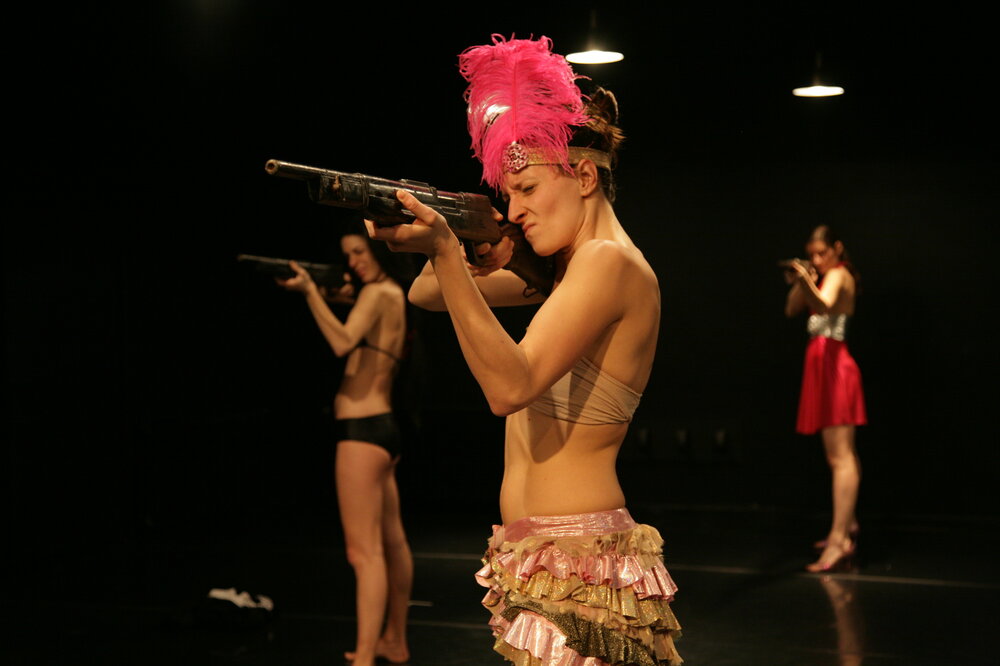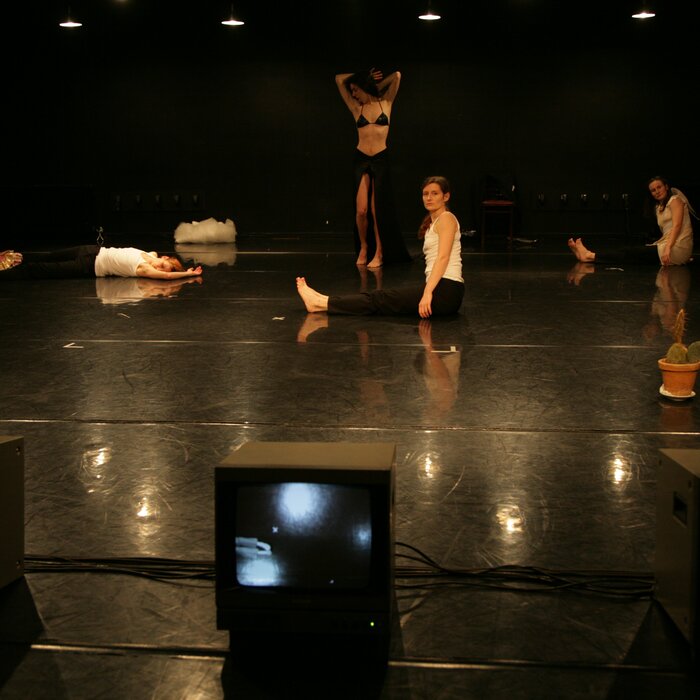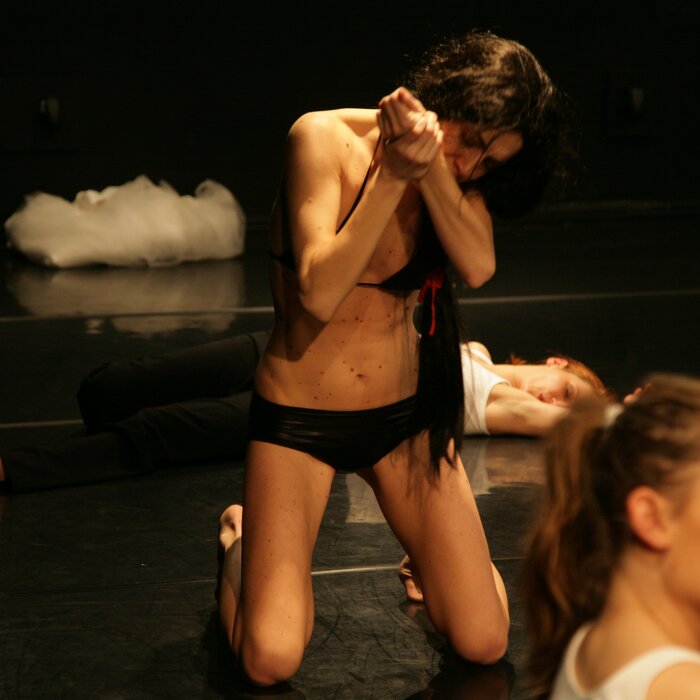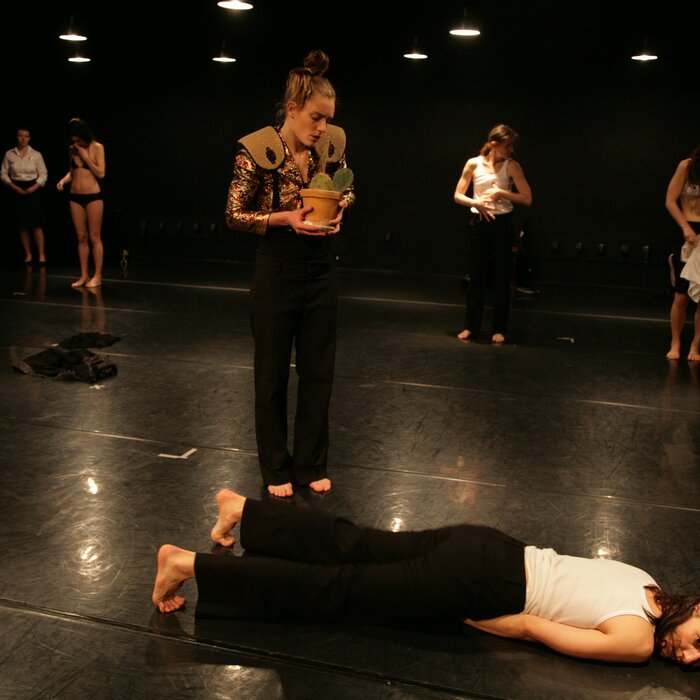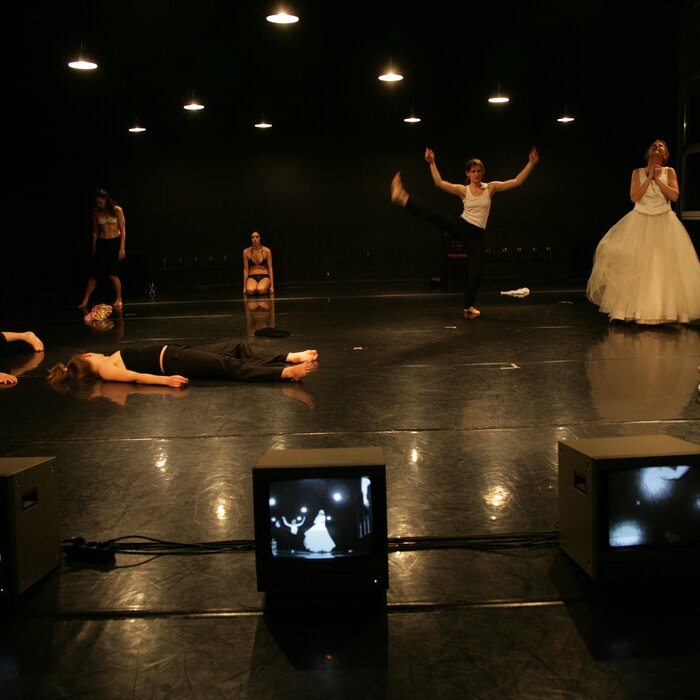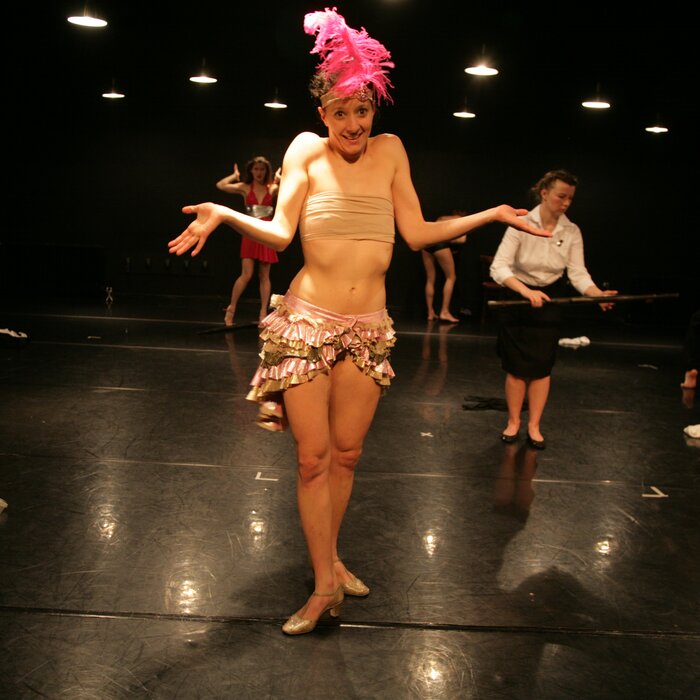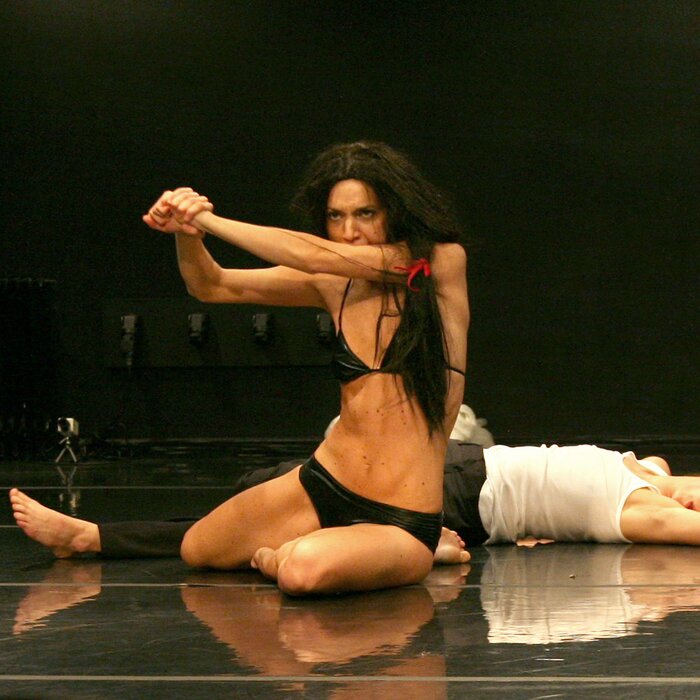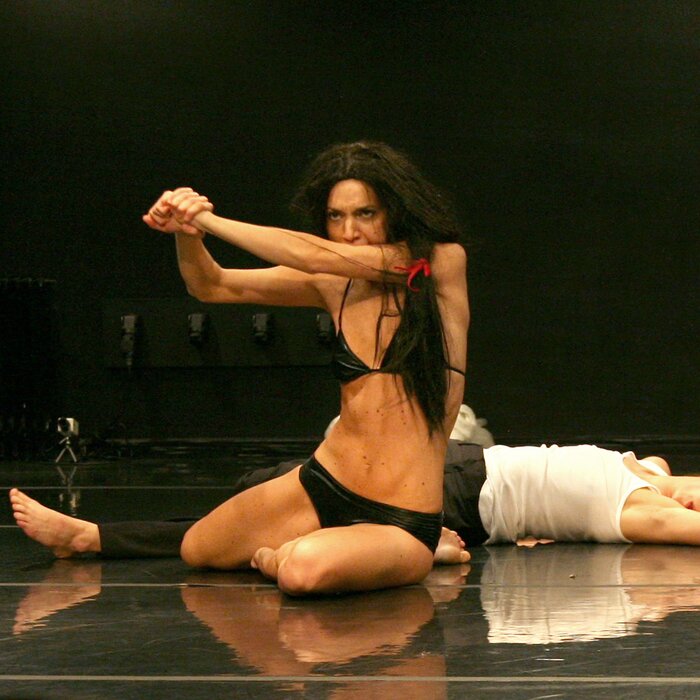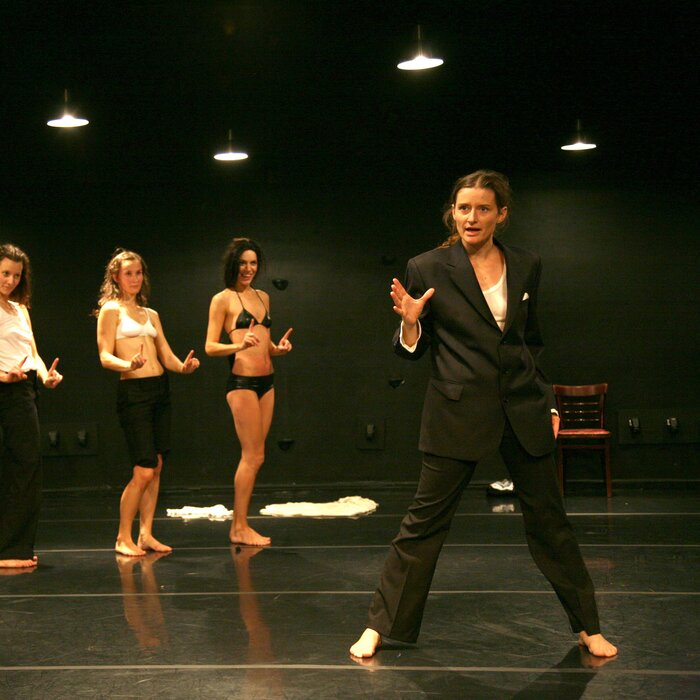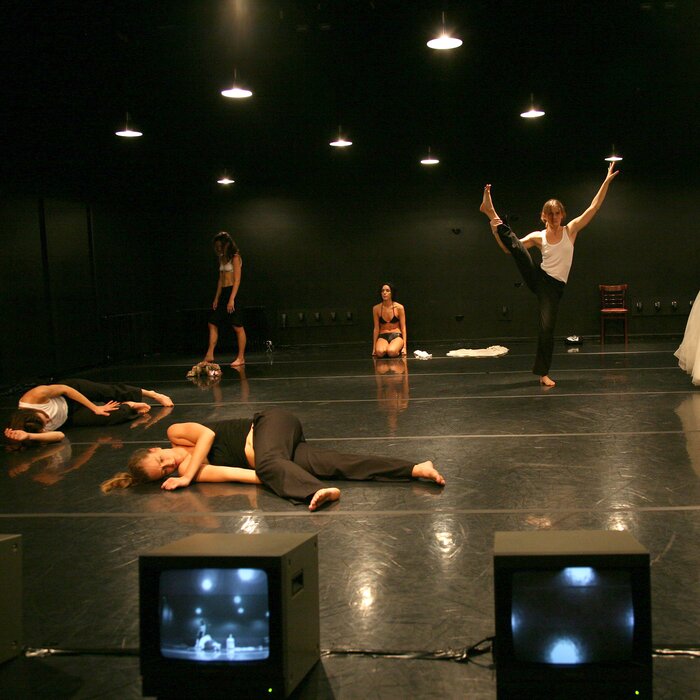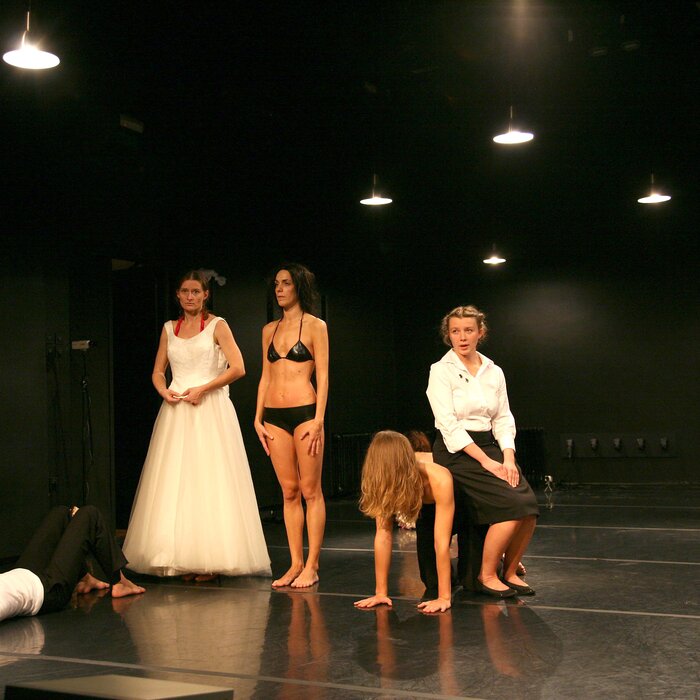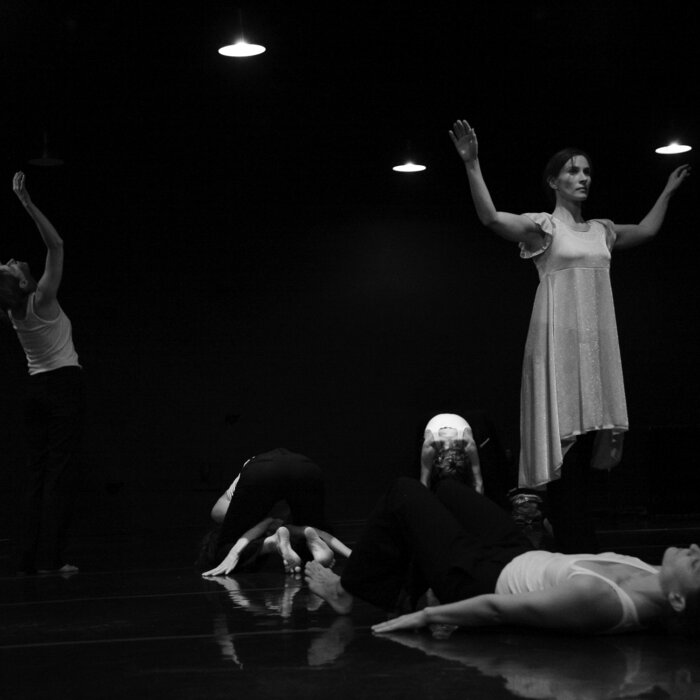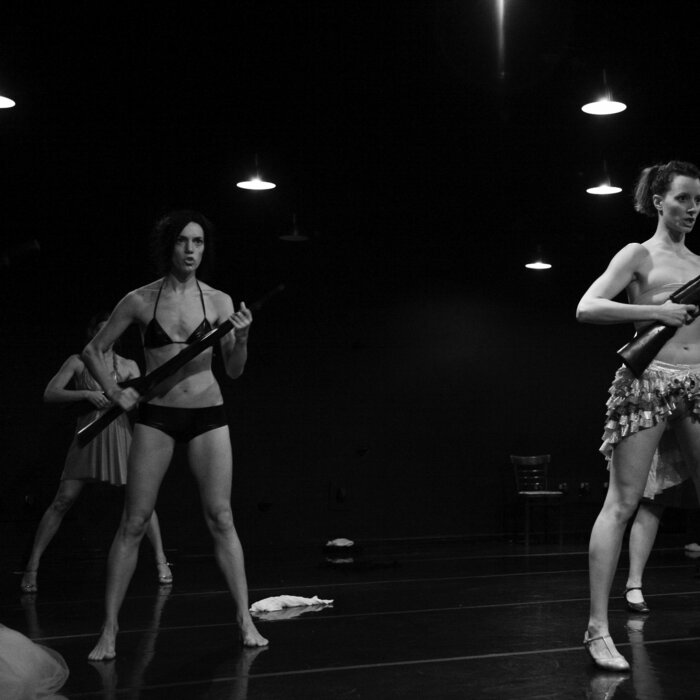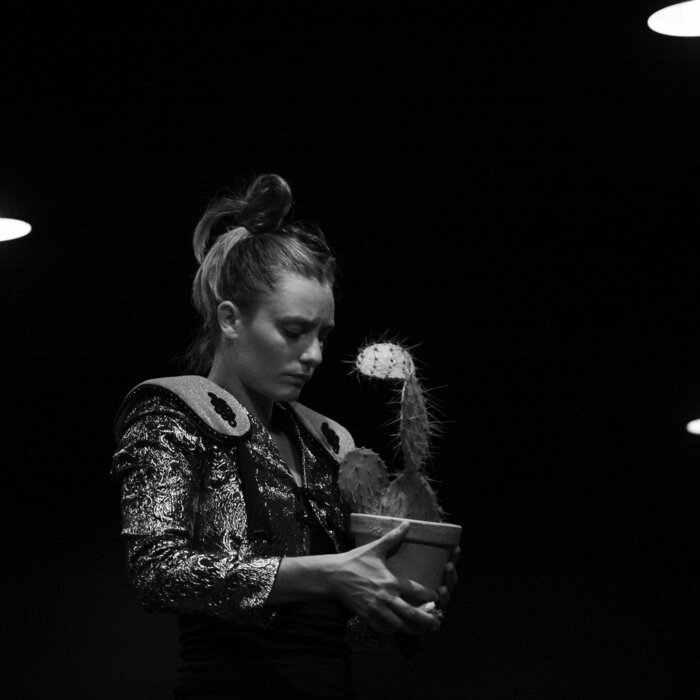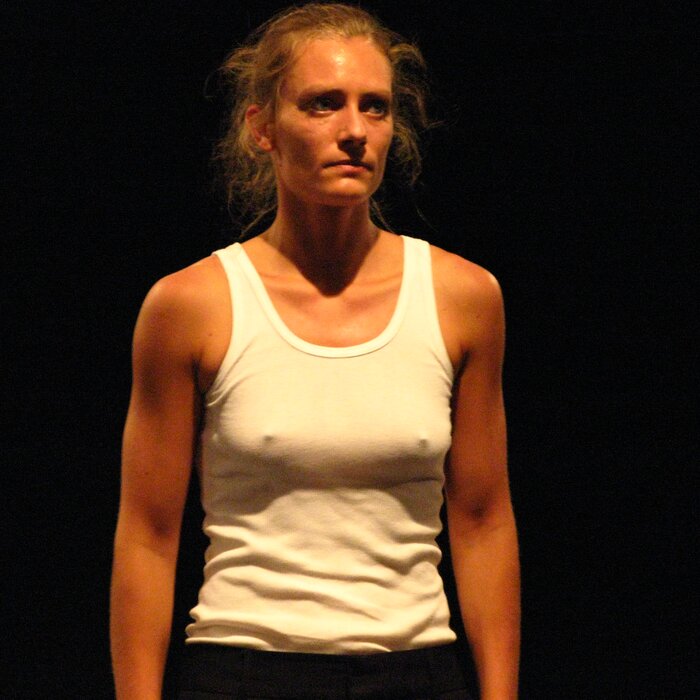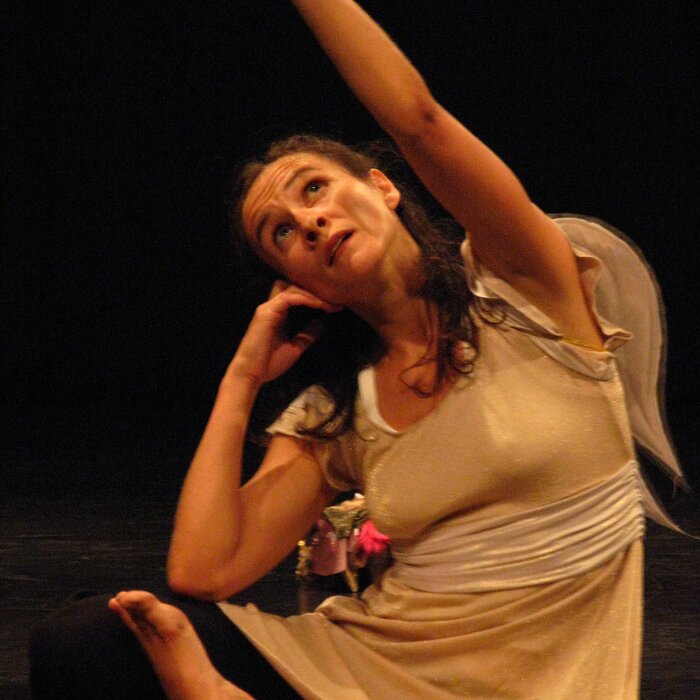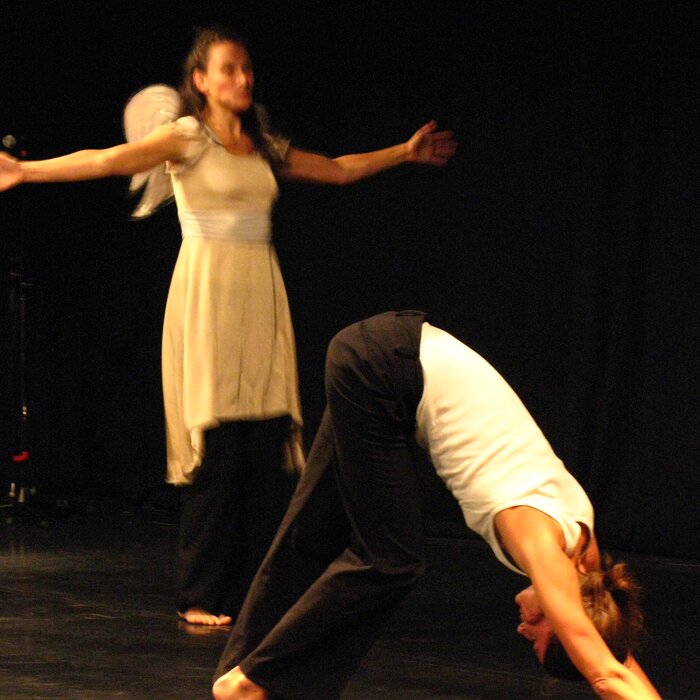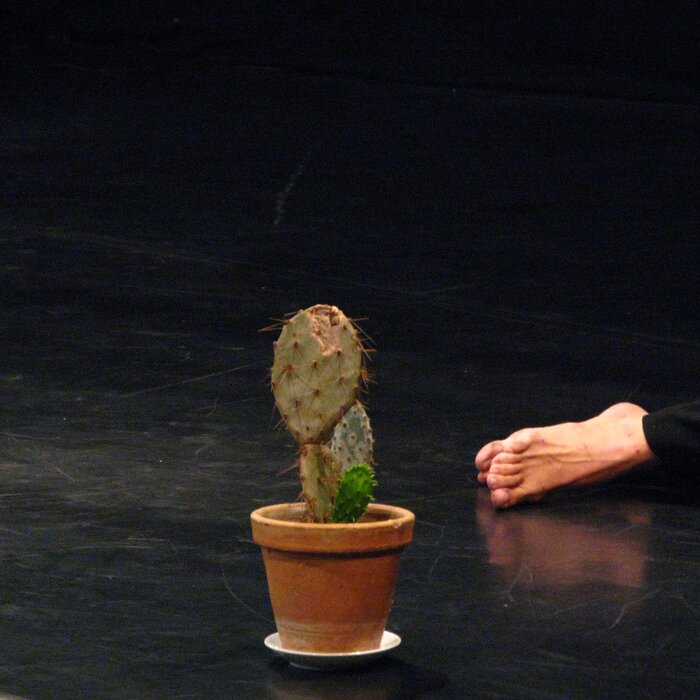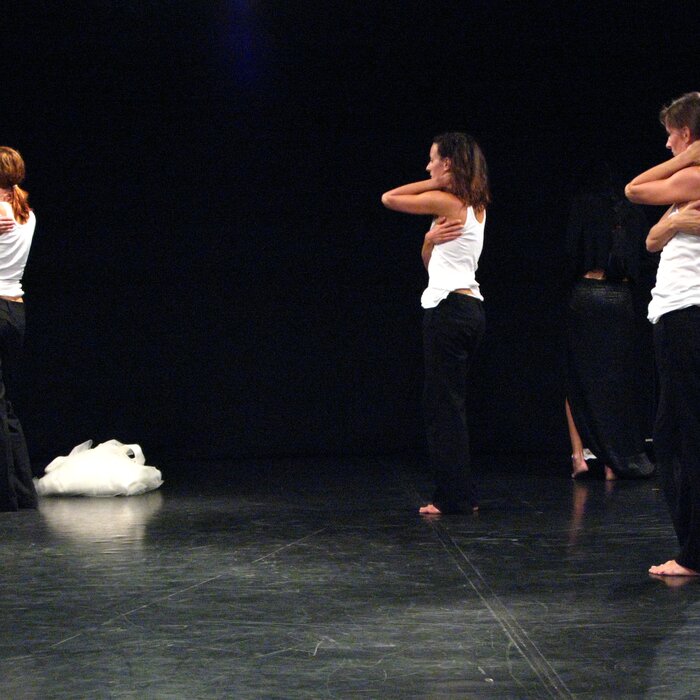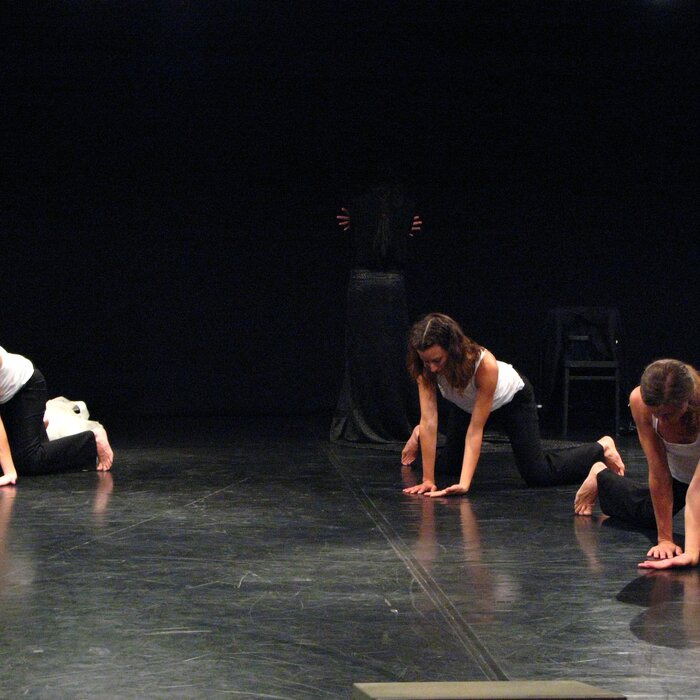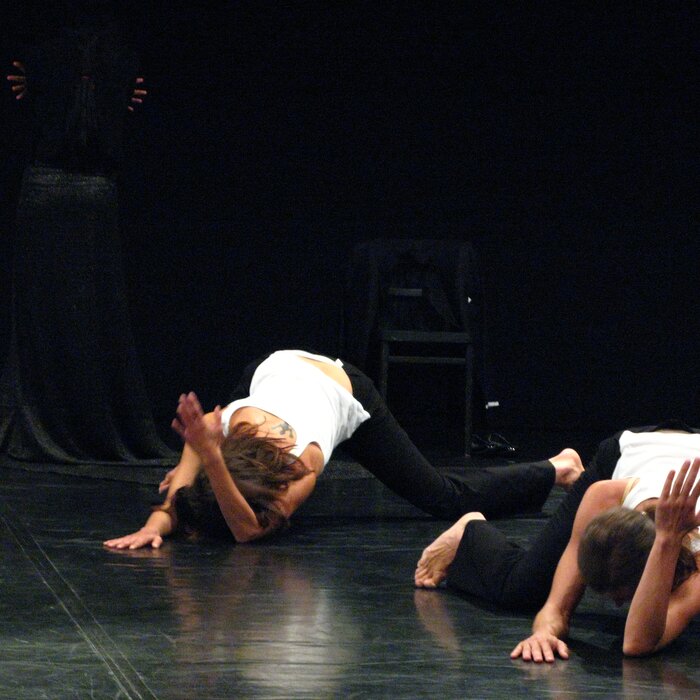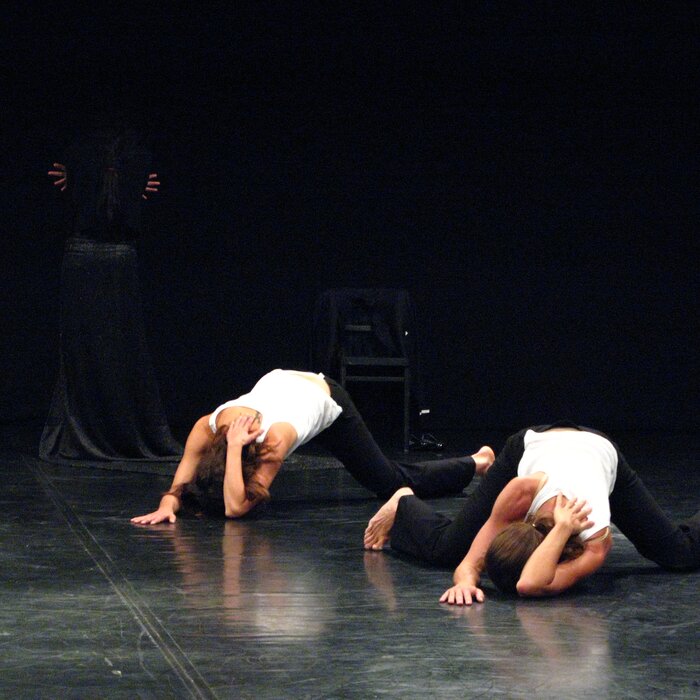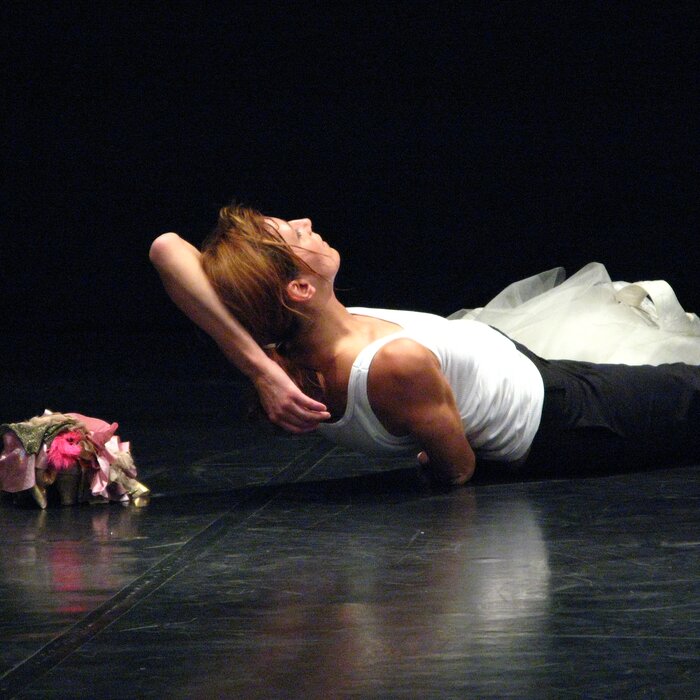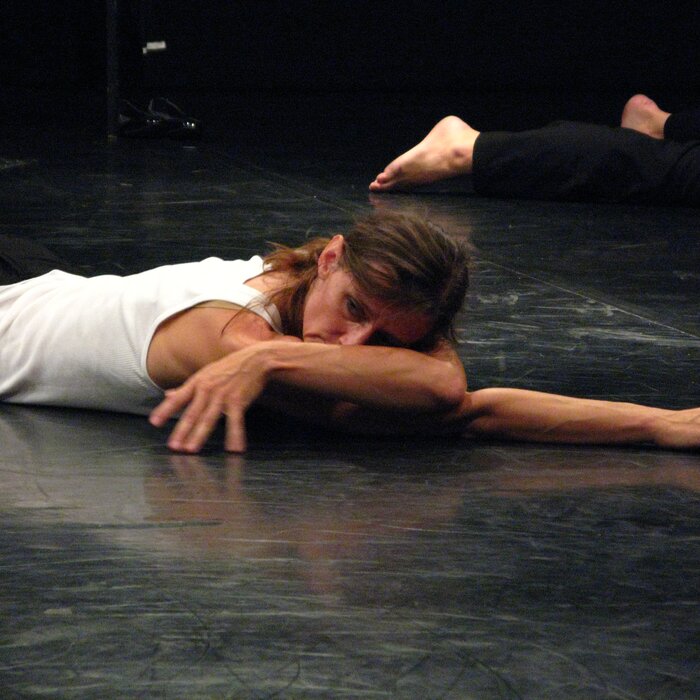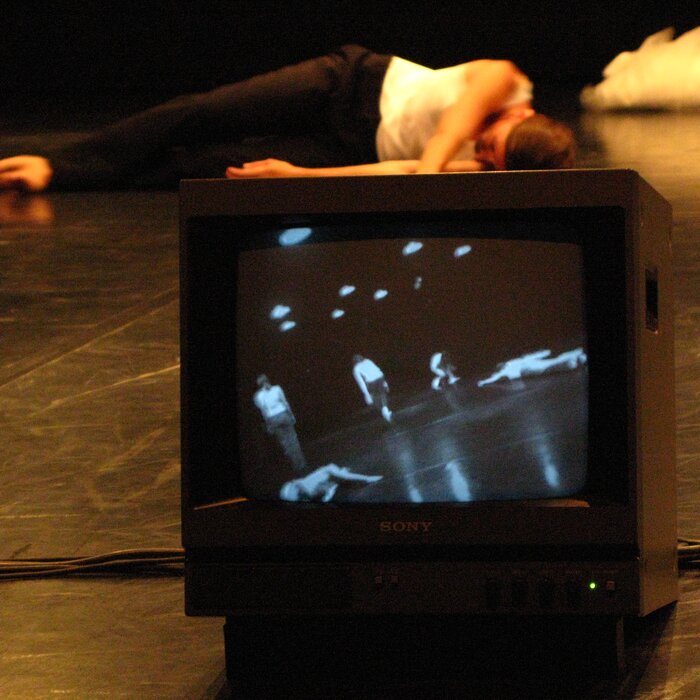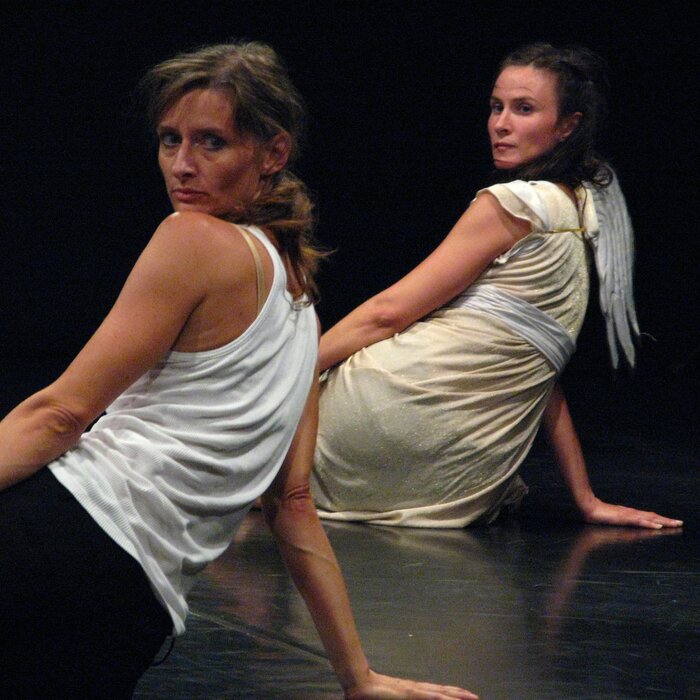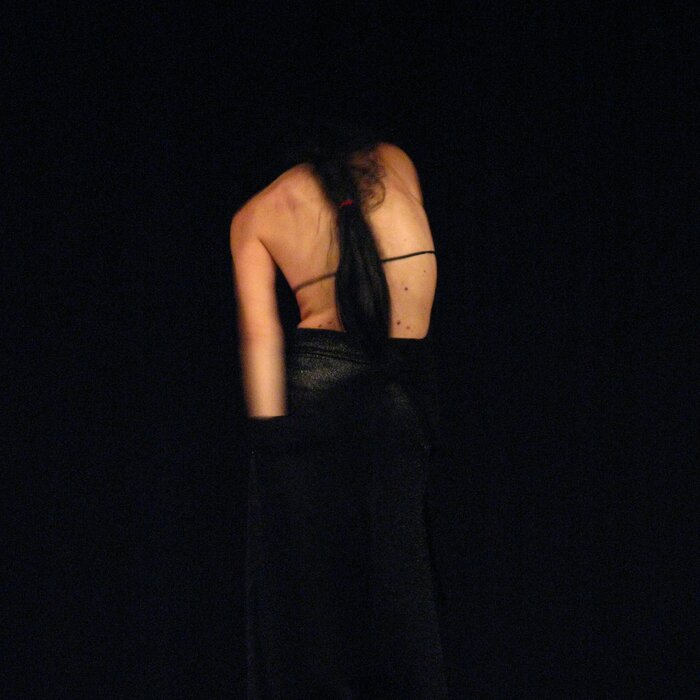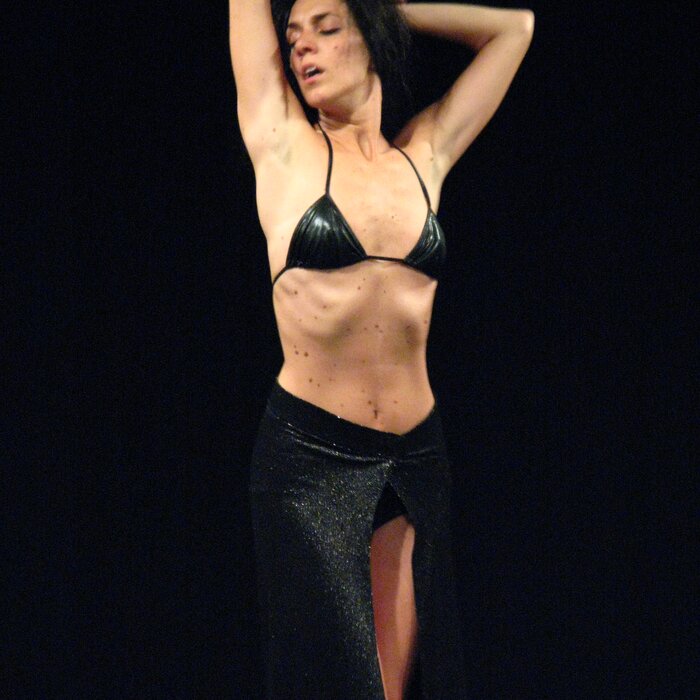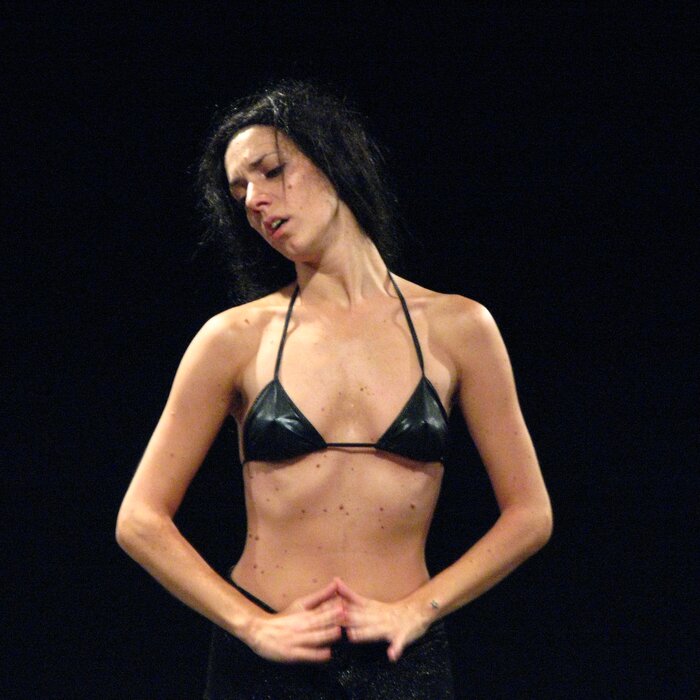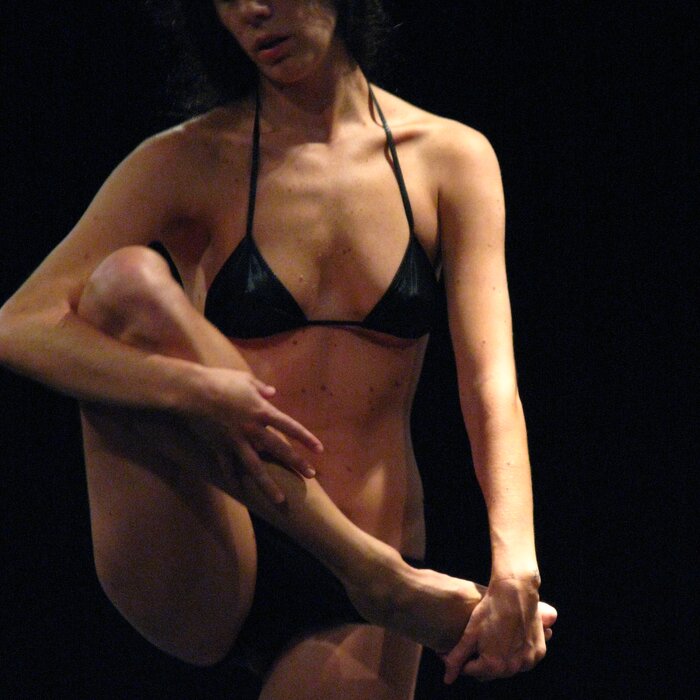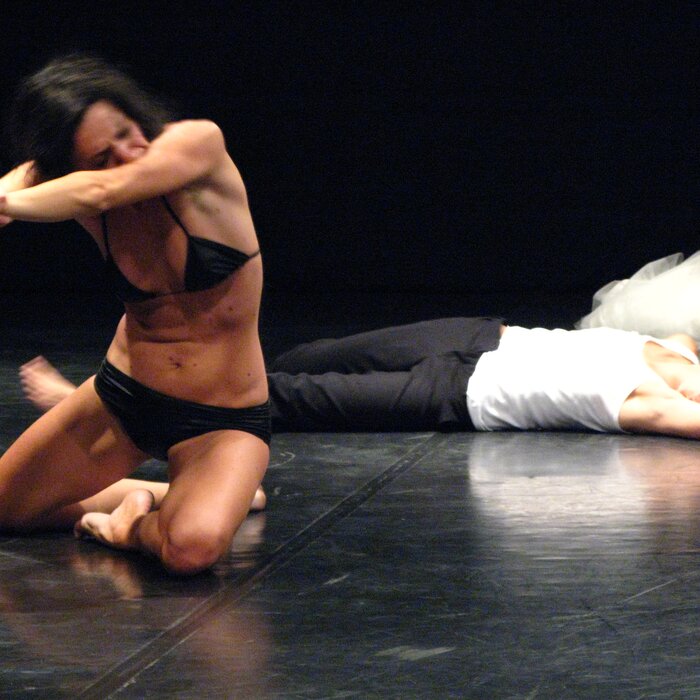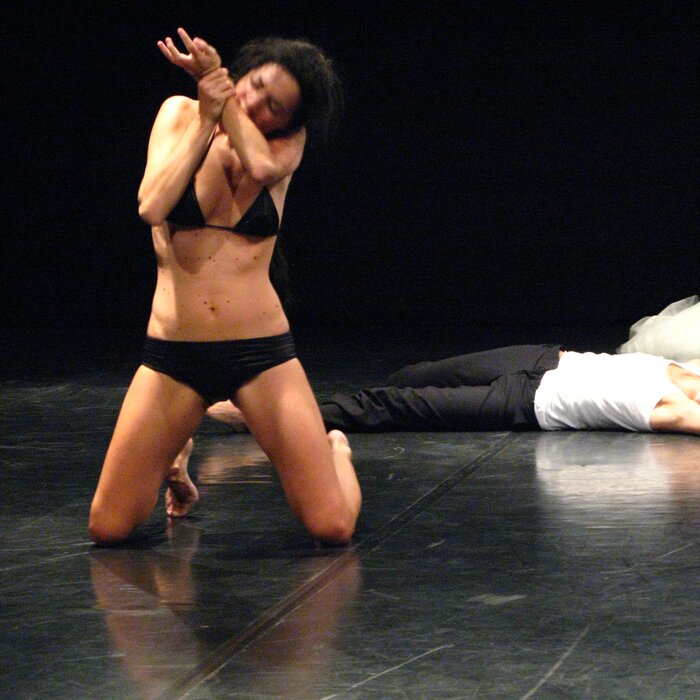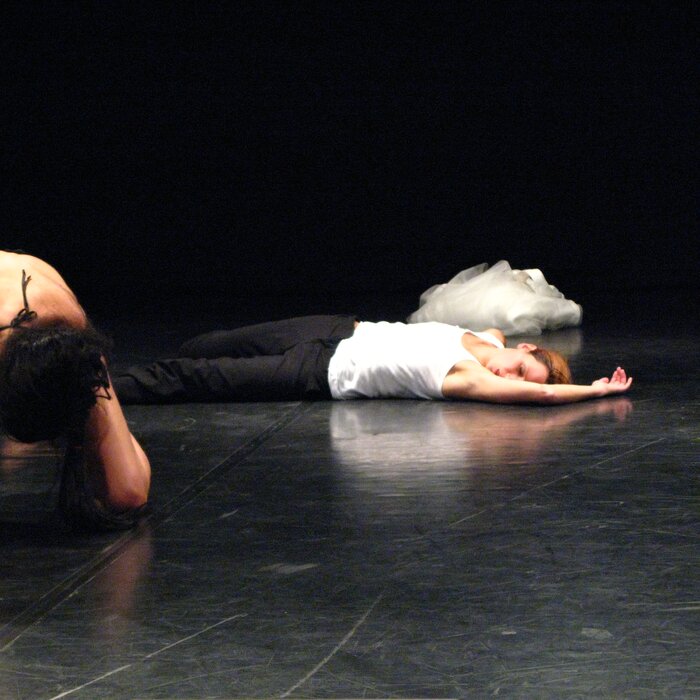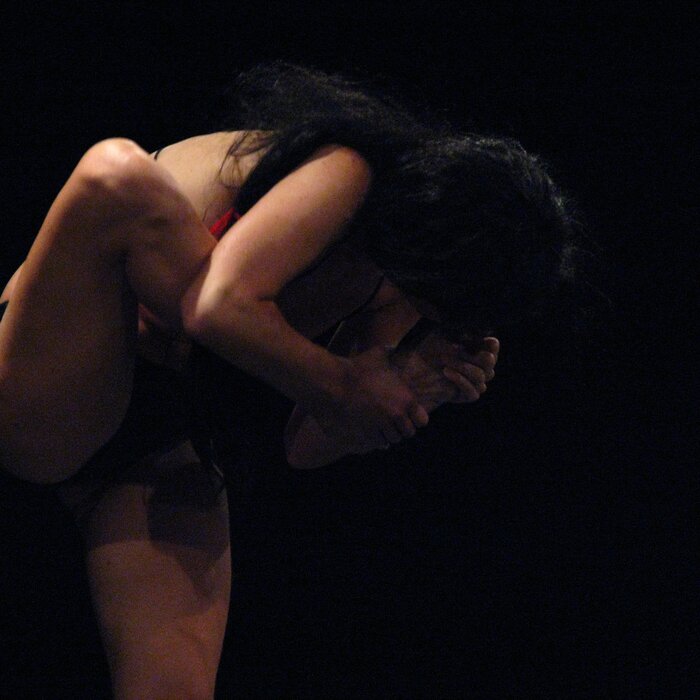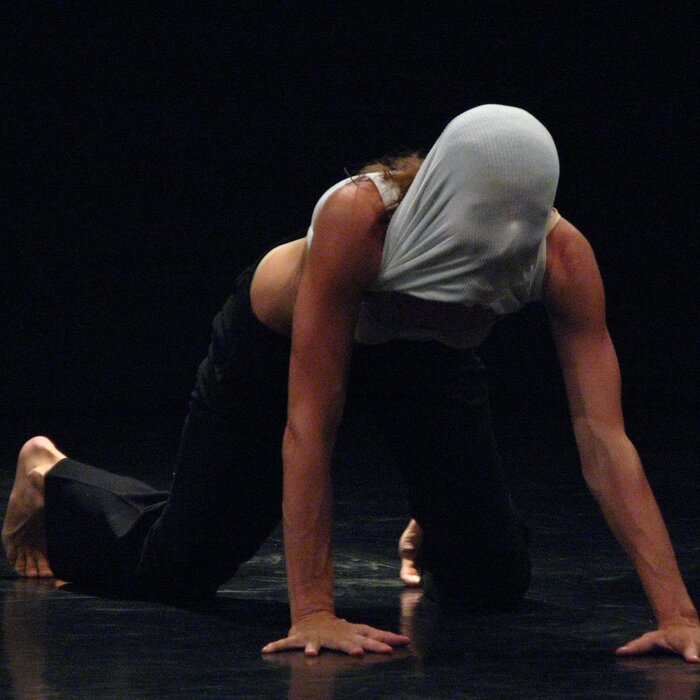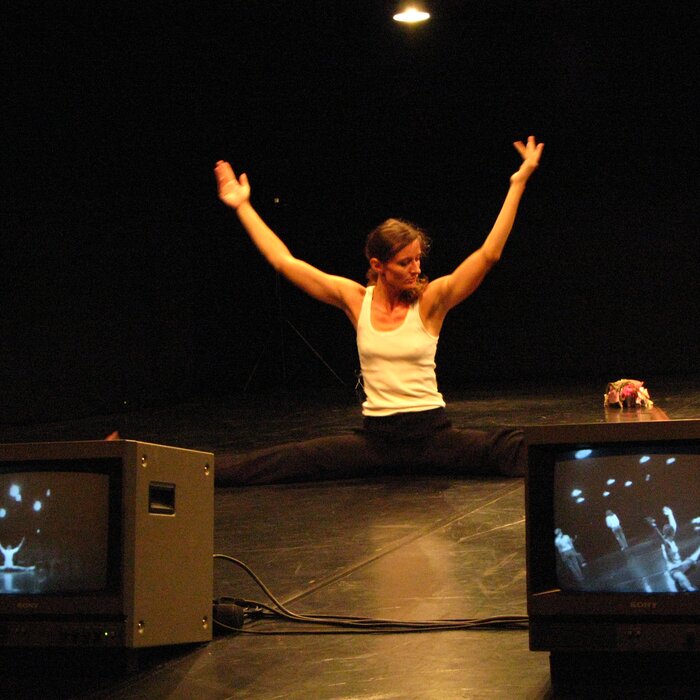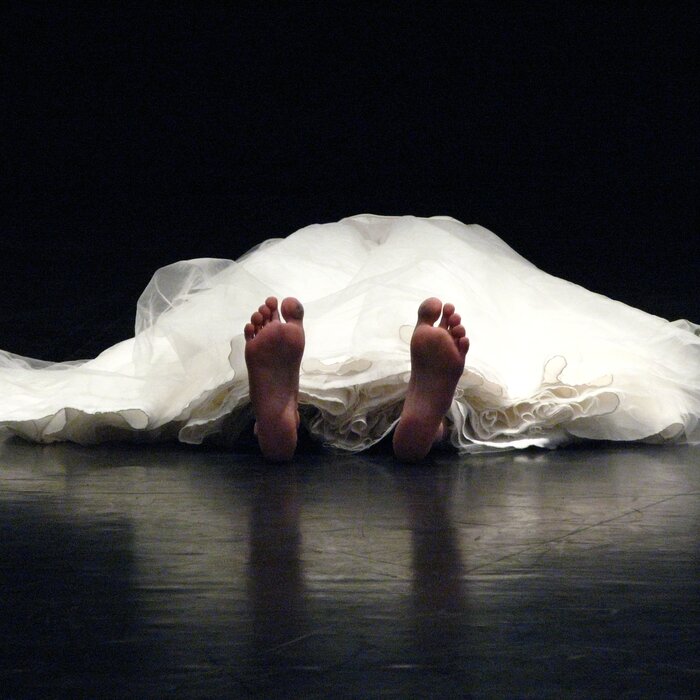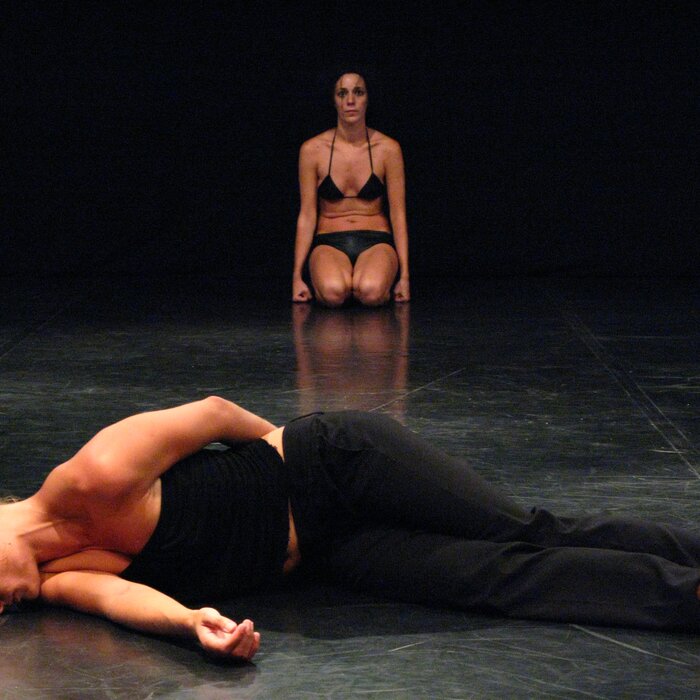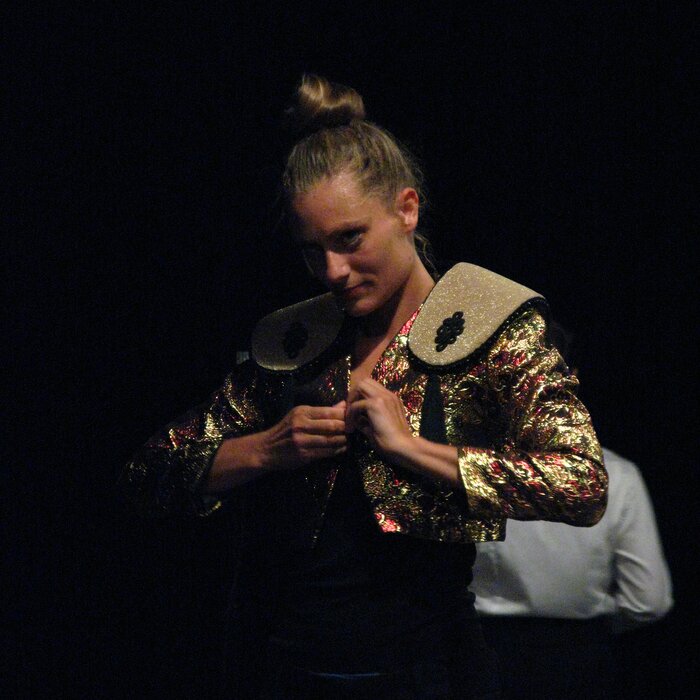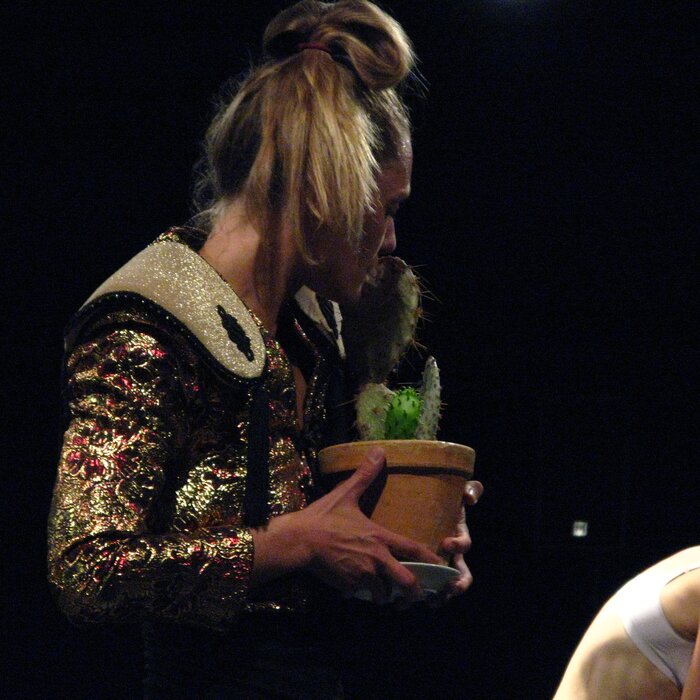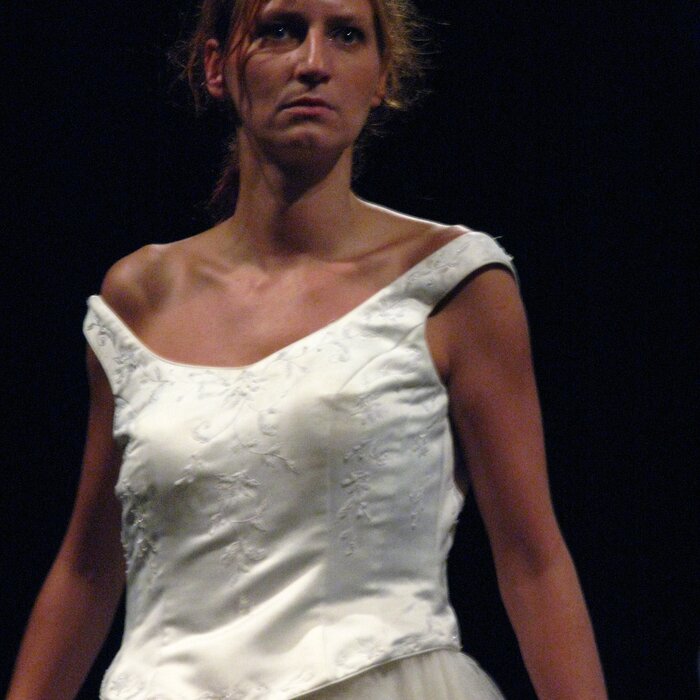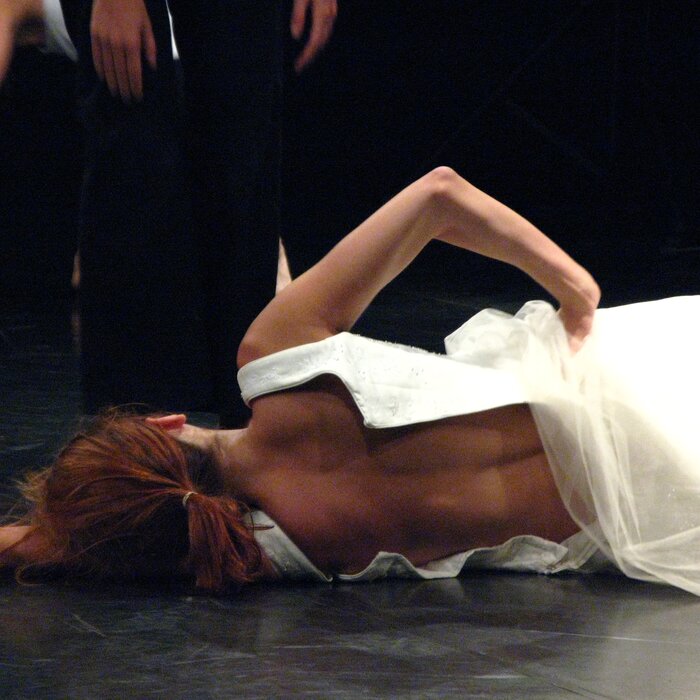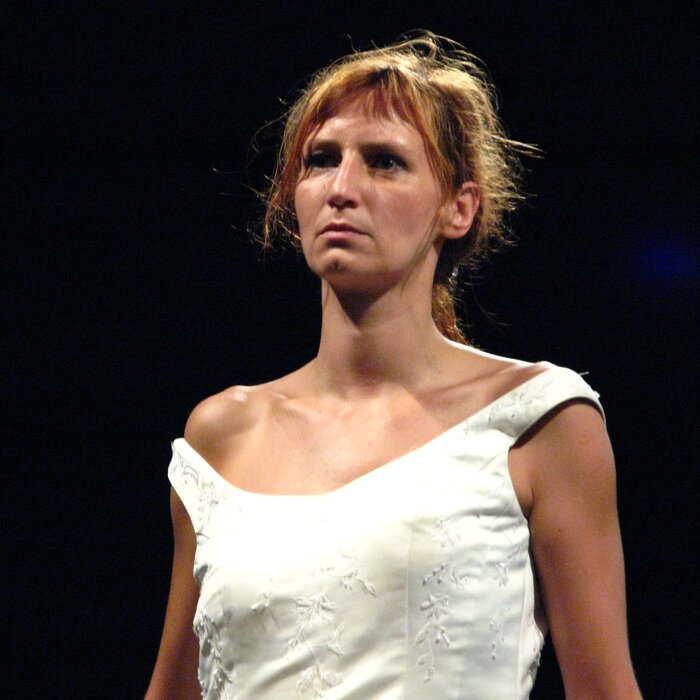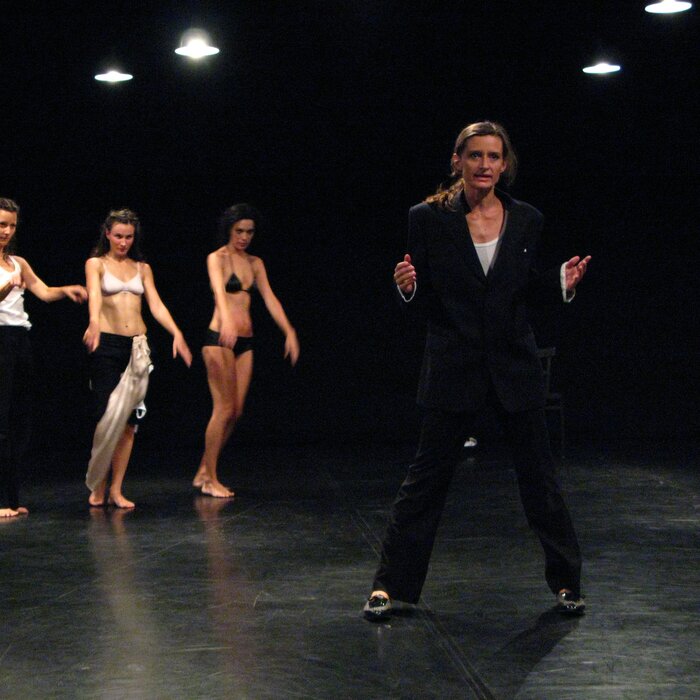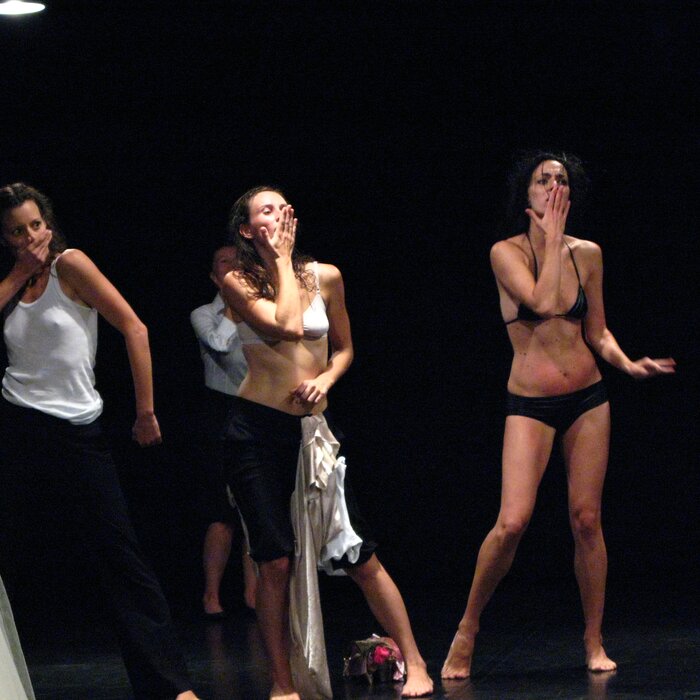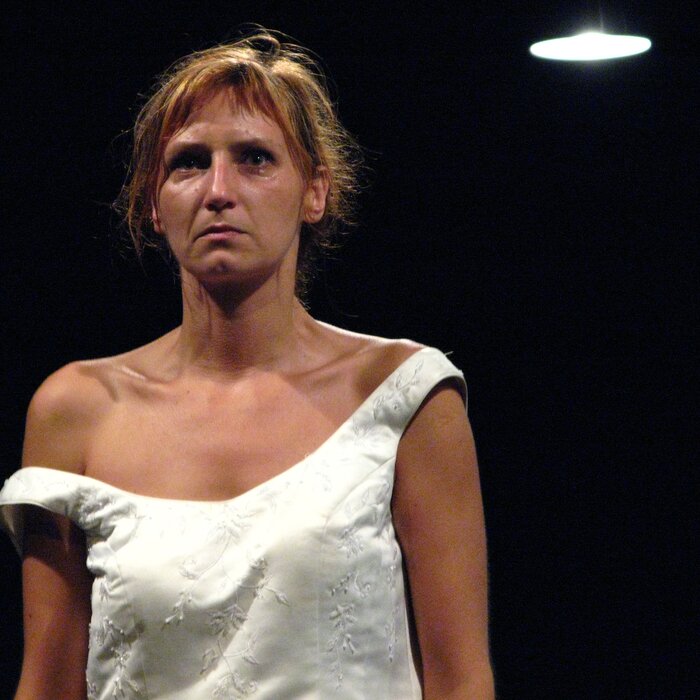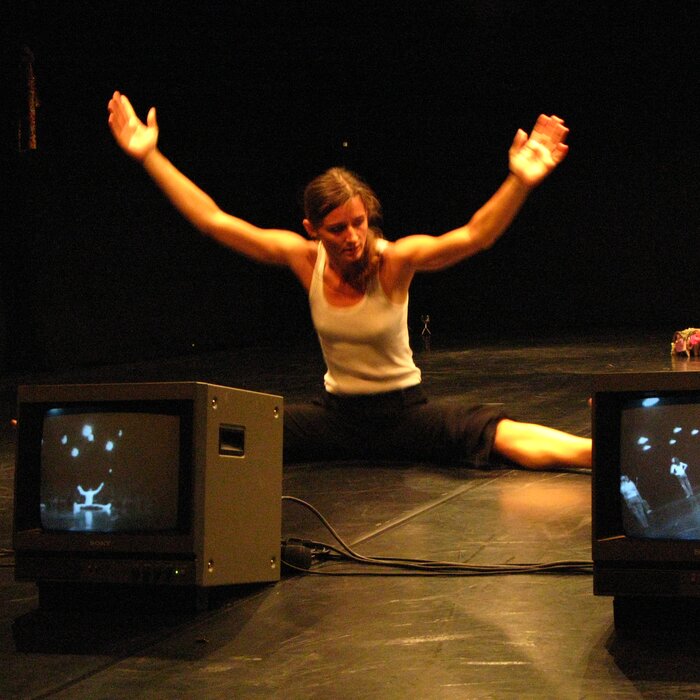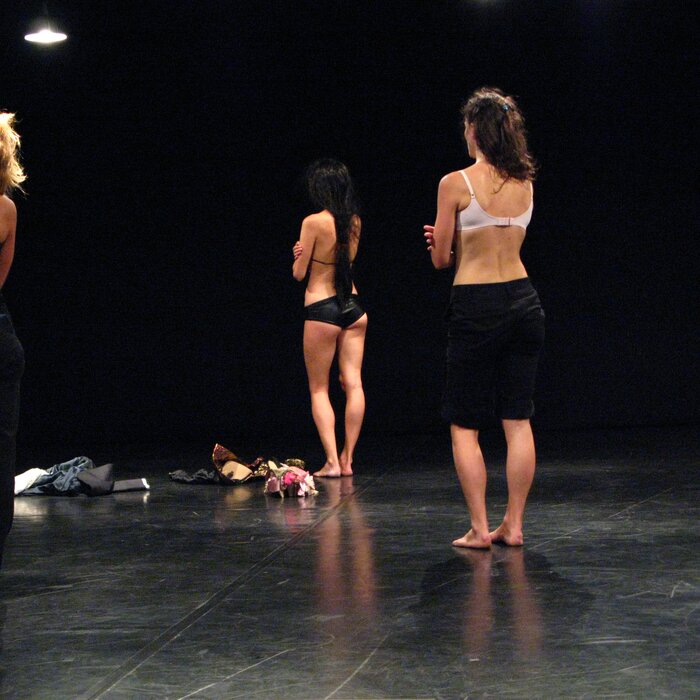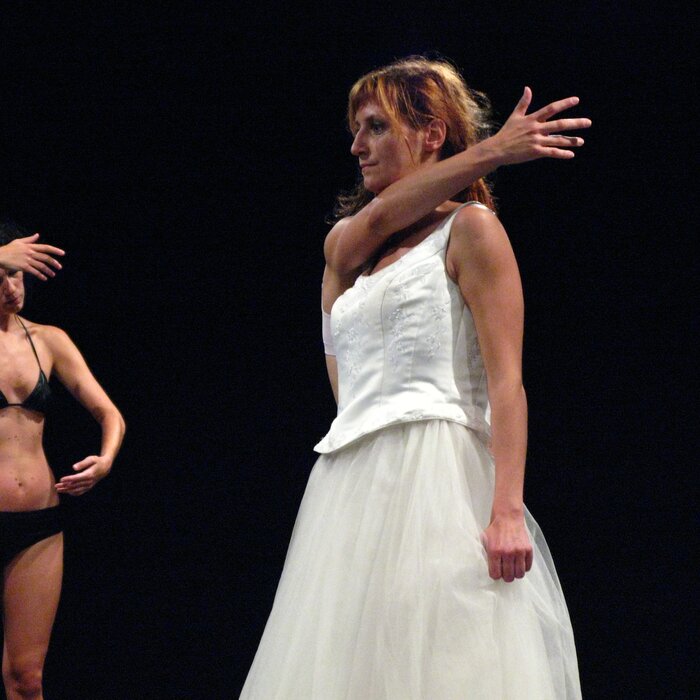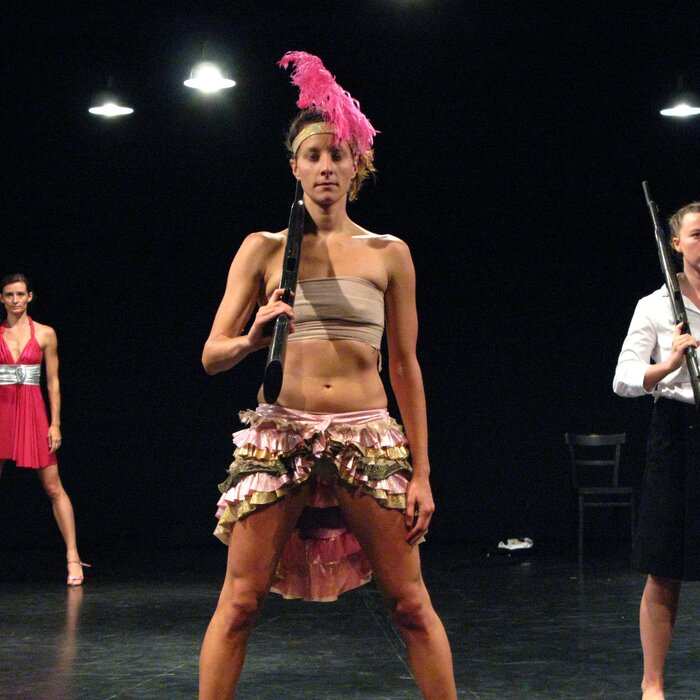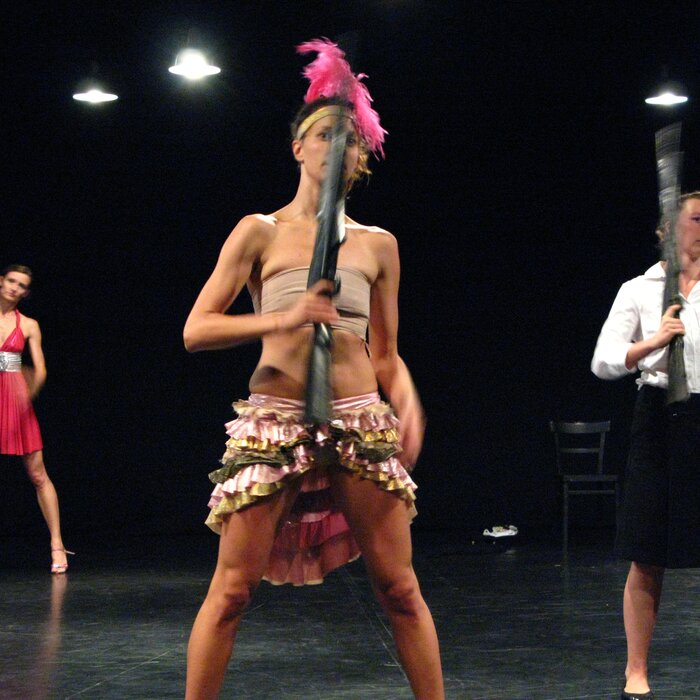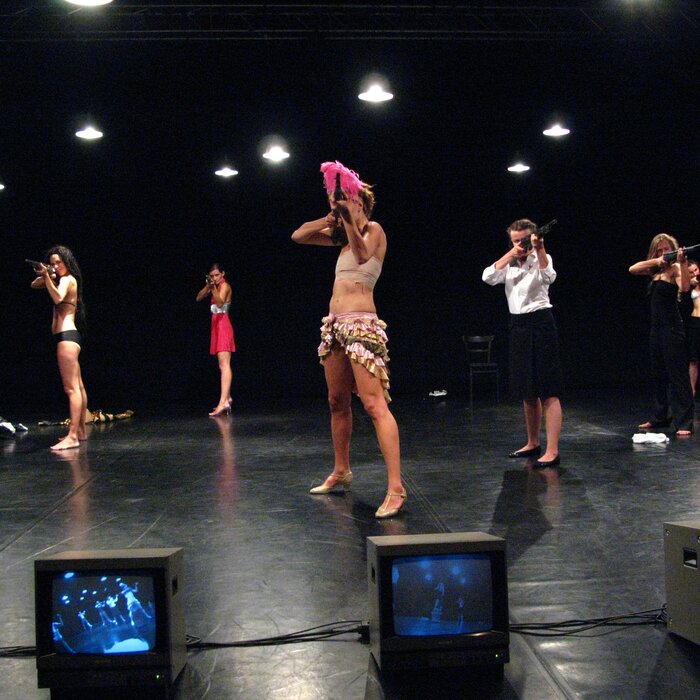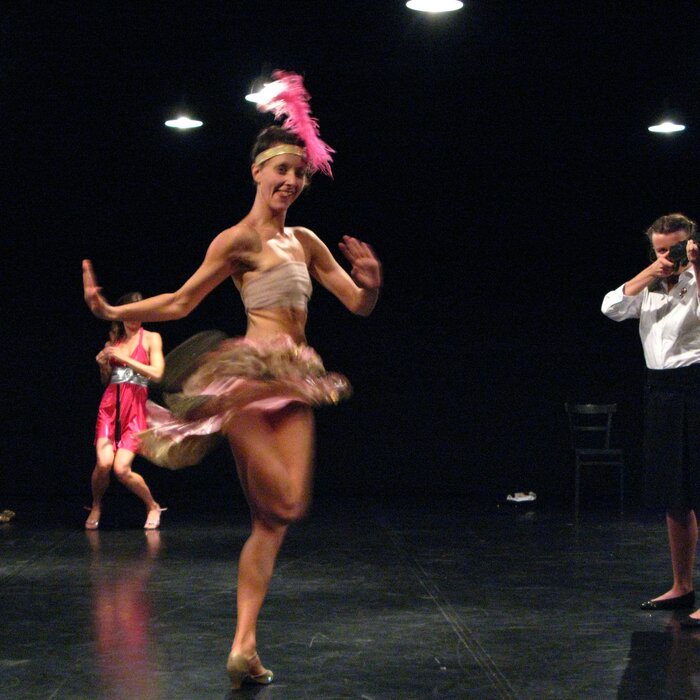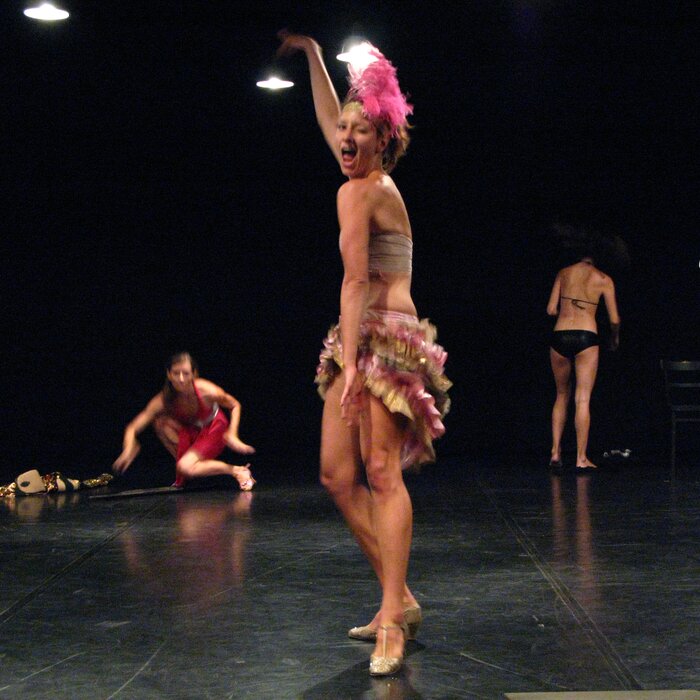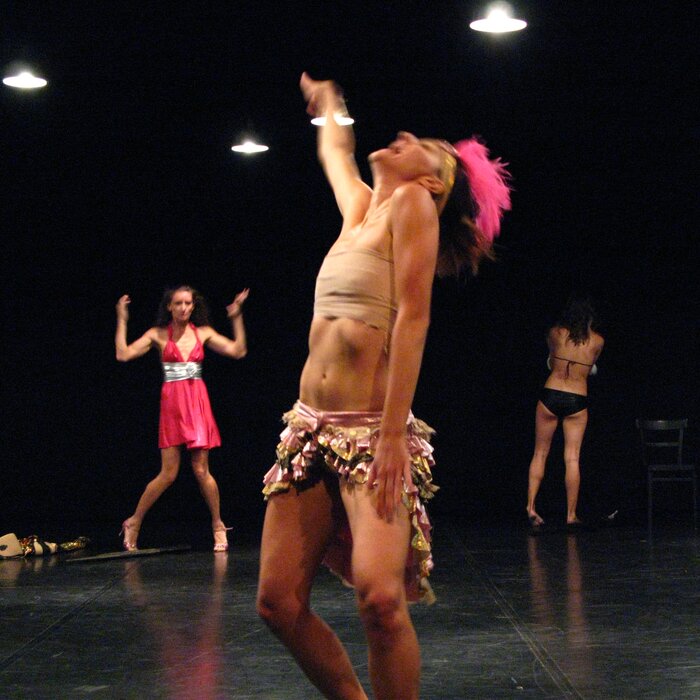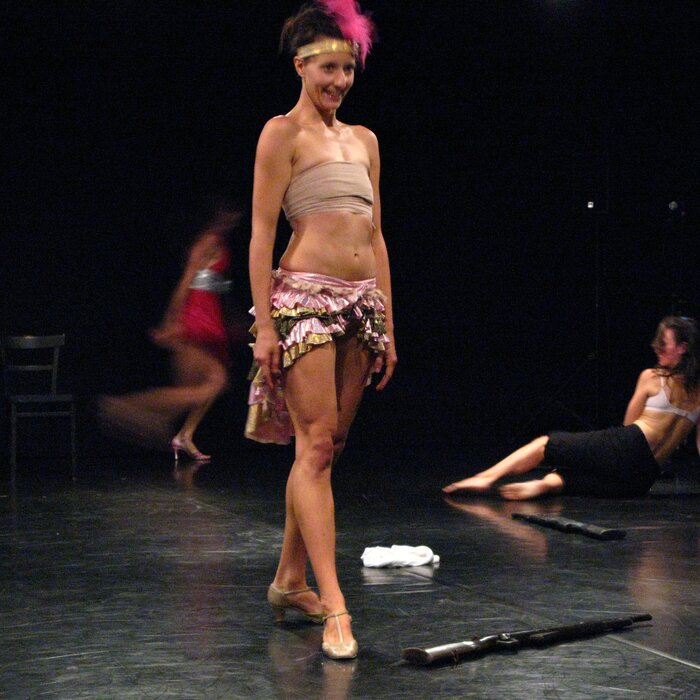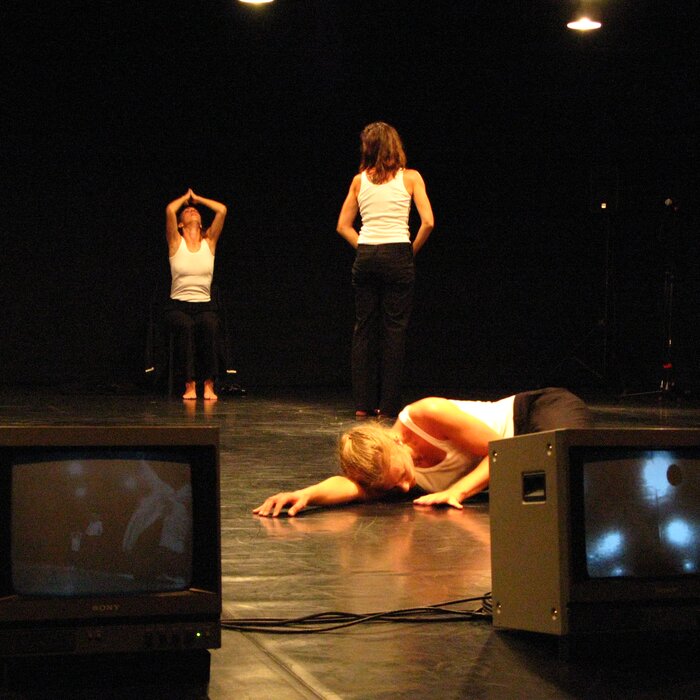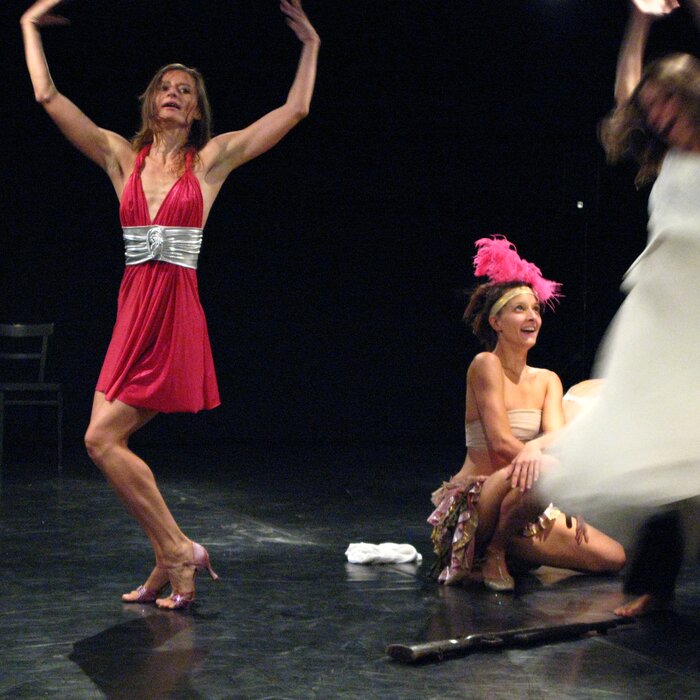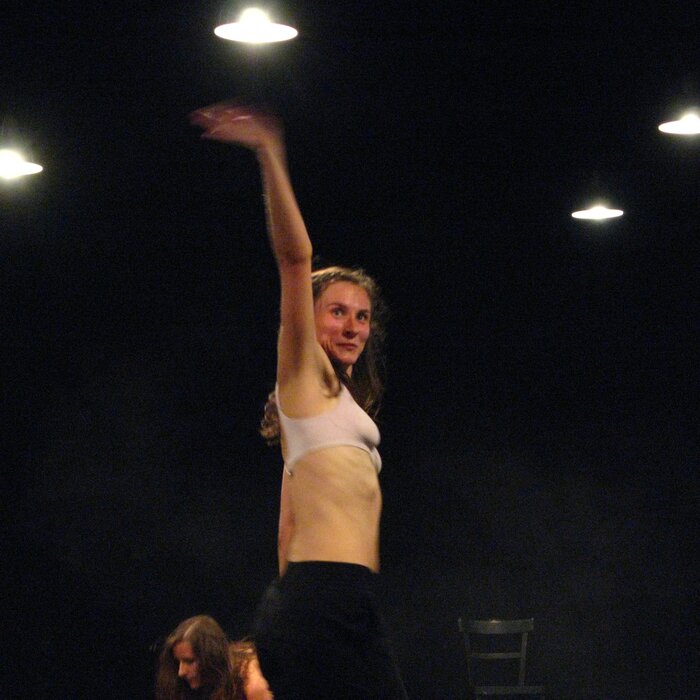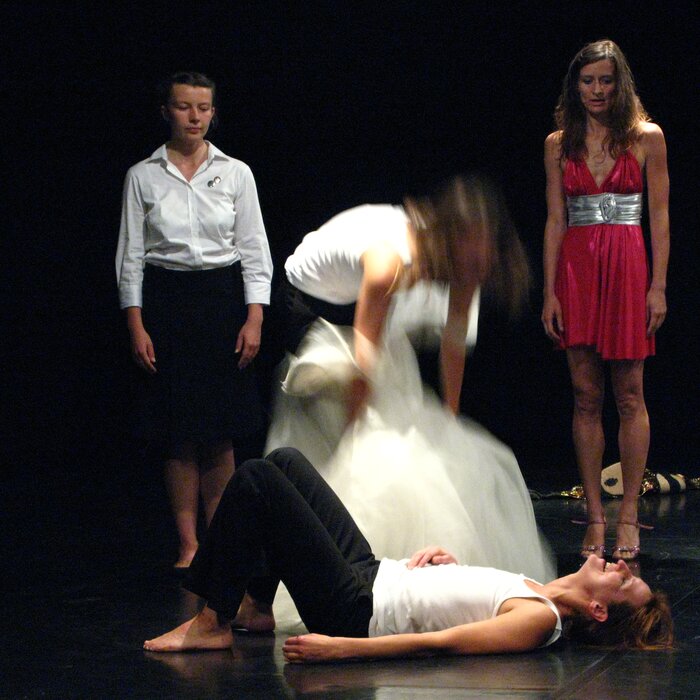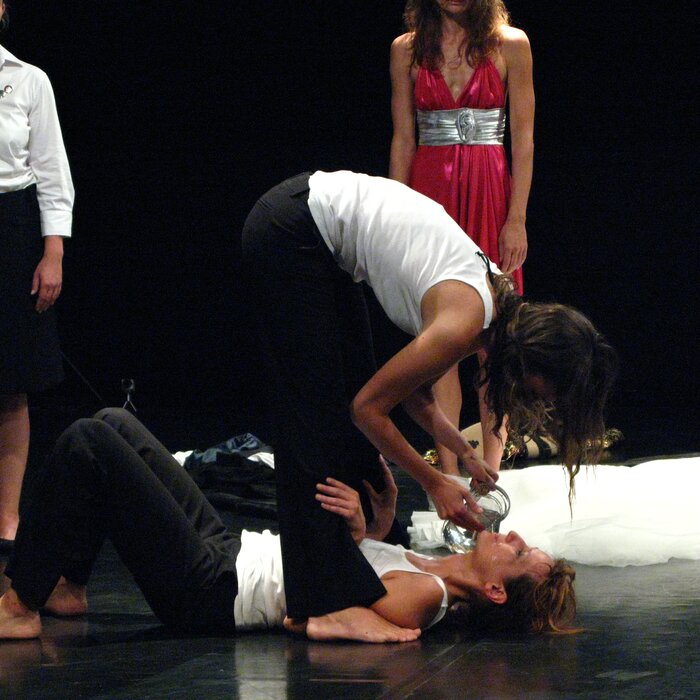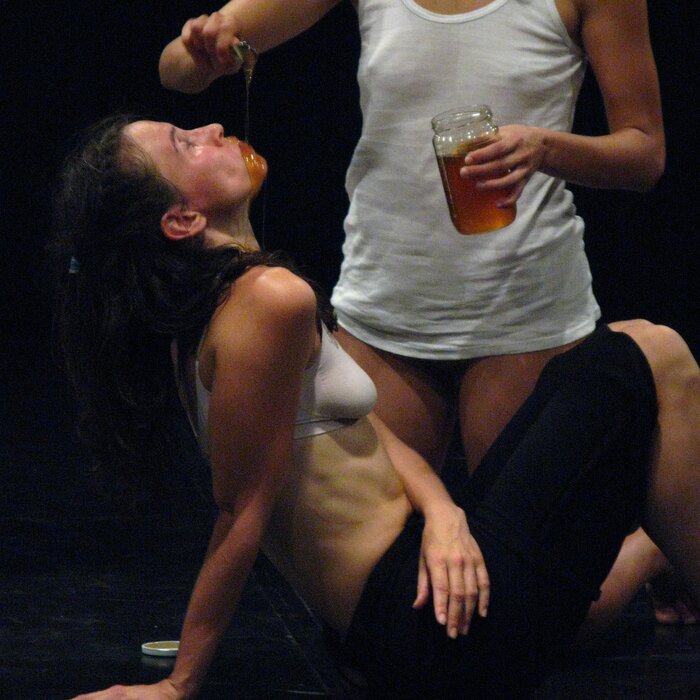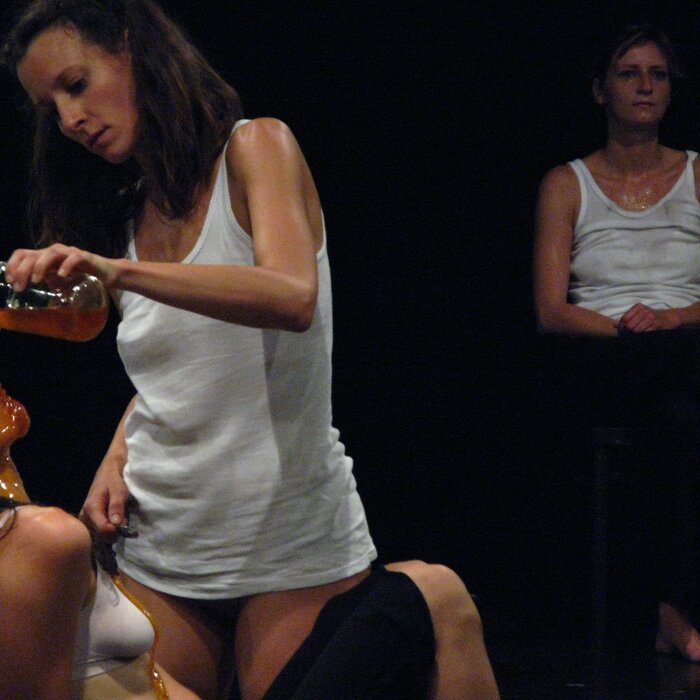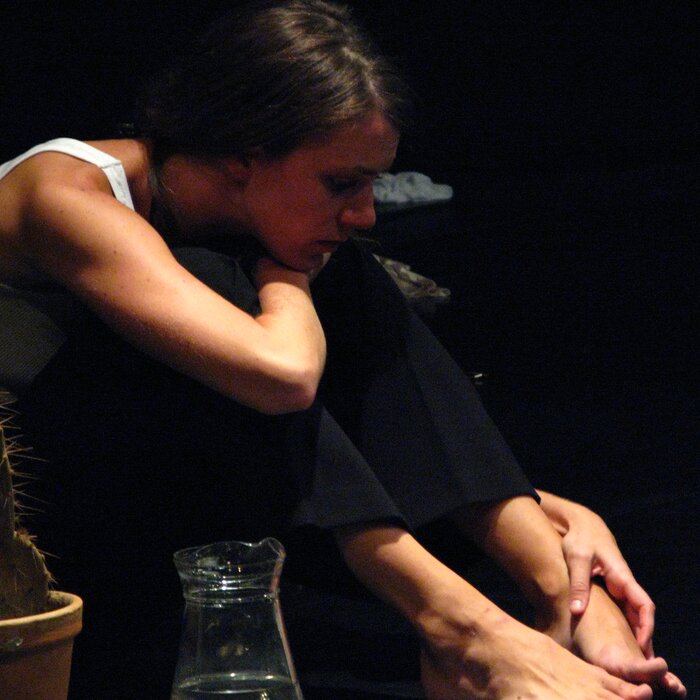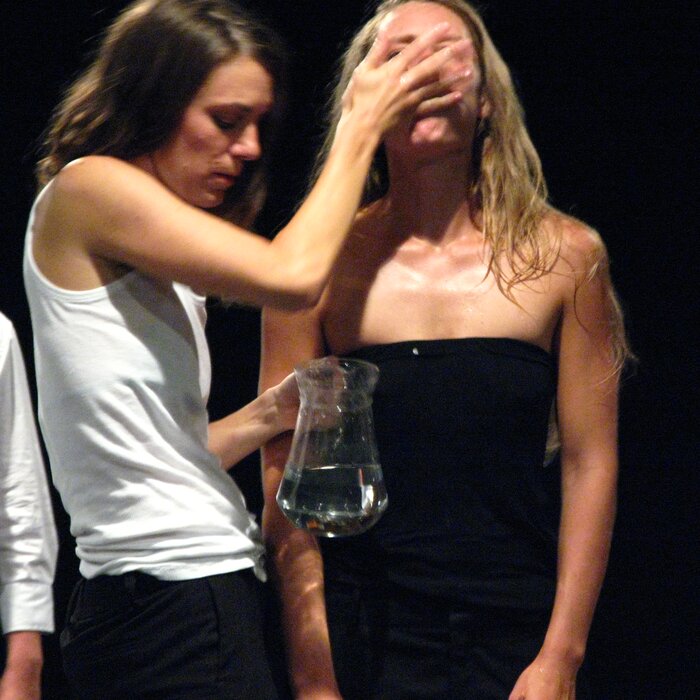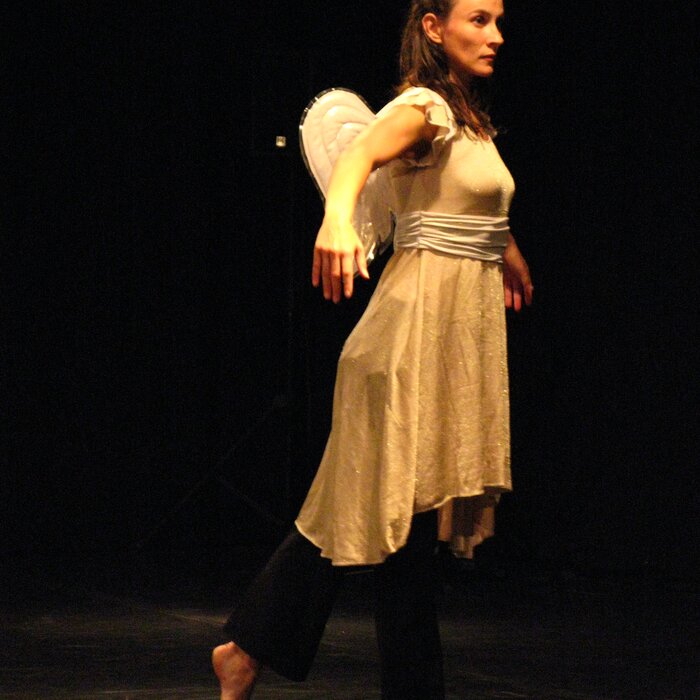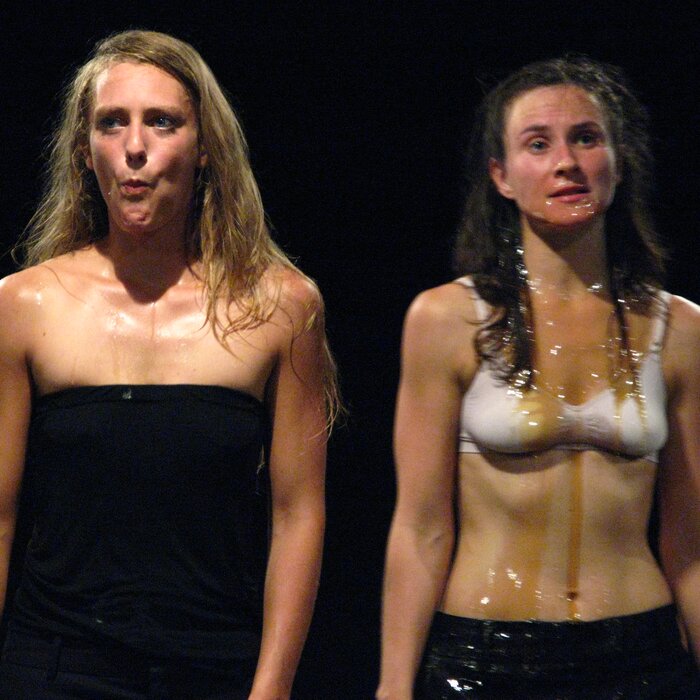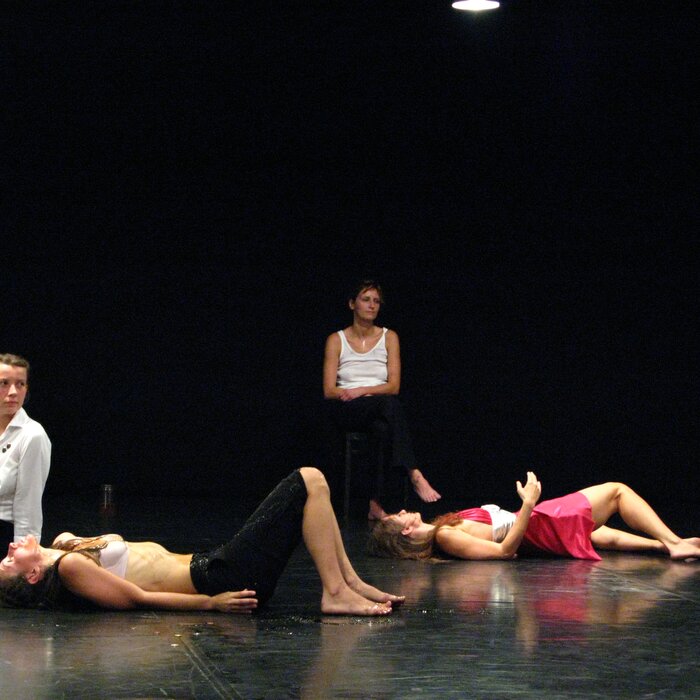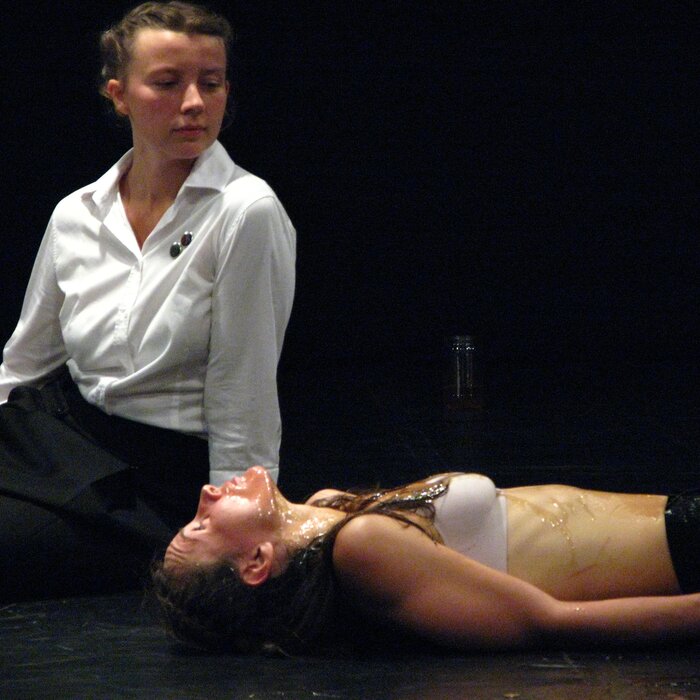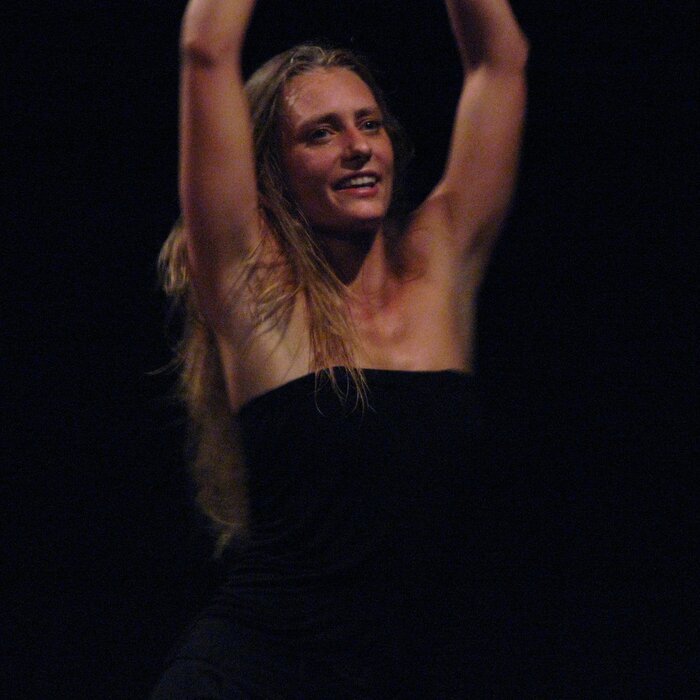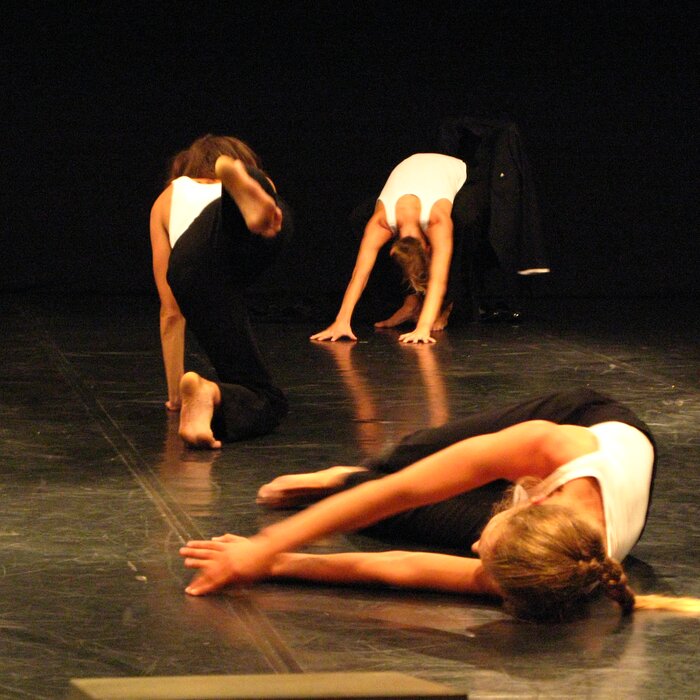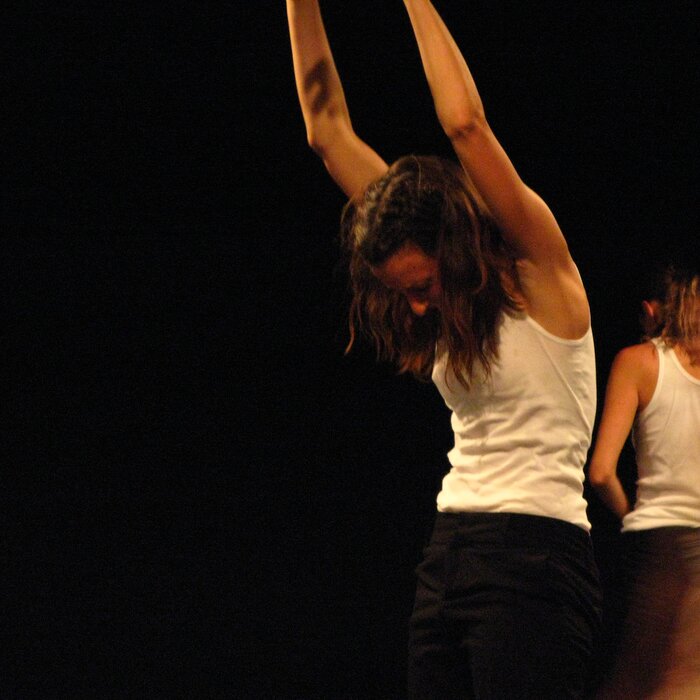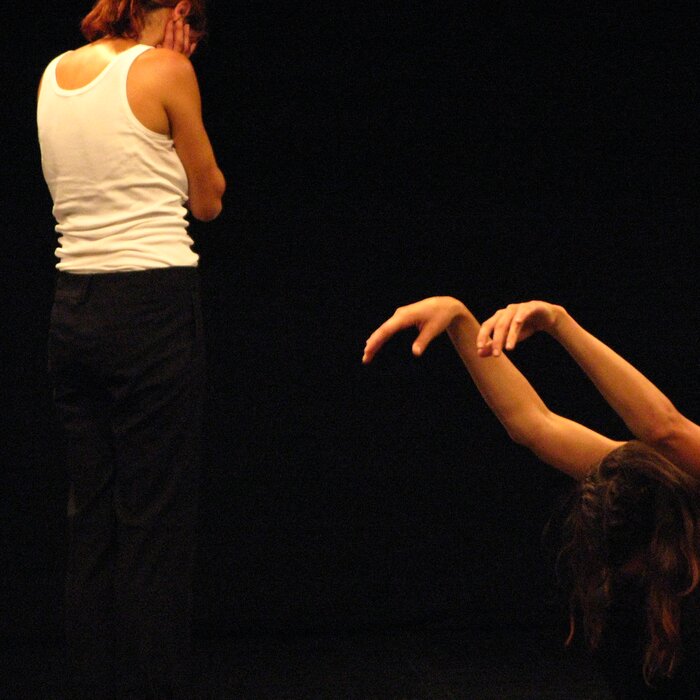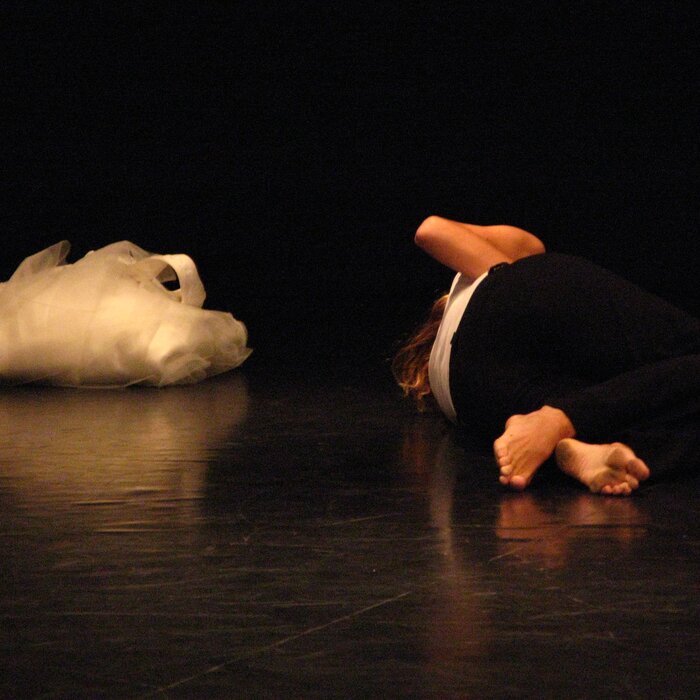The first production of the Emanat Institute for Development and Affirmation of Dance and Contemporary Art was created by its founder, choreographer, and dancer Maja Delak, and premiered at the City of Women festival in 2007. The performance is focused on “the position of women in the cultural, social and political context in con- temporary dance in Slovenia [...] and problematizes the inaugural point of contemporary dance history in our space: contemporary dance was constituted by women already before the universal right to vote had been introduced in this geopolitical territory, and is as such principally a practice of emancipated women’s creativity” (Vevar 2007,14). In contrast, the scenography of the performance—the rather tight venue at Dance Theatre Ljubljana is surrounded by surveying cameras—emphasizes the impossible state of affairs for contemporary dance and especially women artists in the country in which “the system [...] does not support [...] but only controls” (Delak 2008, 16). Furthermore, the system’s short-comings are directly addressed by the performer’s articulation of the ideal circumstances for dancers, to which others respond with bold laughter. In Expensive Darlings (Drage drage), Maja Delak effectively confronts phallocentrism and its simplified dualistic system through which women always appear only as the first difference and less than men. The performers transgress from universality/ neutrality (black and white costumes) into specific individualized, yet marginalized (female) characters that are based on Tatjana Greif’s taxonomy presented in her text “Queer Performative Art” (Vampirella, femme fatale, drag king, the bride, Barbarella, toreador, etc.). To oppose the dualistic system, the choreographer composes seven solos (co-created and performed by Maja Delak, Katja Kosi, Barbara Krajnc, Jelena Rusjan, Vlasta Veselko, Urška Vohar, and Nataša Živković) and juxtaposes them, but ensures their sufficient interconnection through which the heterogeneity of relationships (such as dependence, support, admiration, exploitation, etc.) open up, unfolding a complex map of (social) reasons for their existence. By doing so, Delak leans on Eve Kosofsky Sedgwick’s concept ‘beside’ as a proposition where “several elements may lie alongside. [...] Beside comprises a wide range of desiring, identifying, representing, repelling, paralleling, differentiating, rivalling, leaning, twisting, mimicking, withdrawing, attracting, warping, and other relations” (Kosofsky Sedgwick 2003, 8). Such a position is crucial for situating the consequences of phallocentrism in the cultural, social, and political system on women, which is also fundamentally articulated in contemporary dance history.
From Nika Arhar, Jasmina Založnik (ed.), Bodies ofm Dance, Aspects of Dance as Cultural, Political, and Art Work in Yugoslavia and After (Belgrade, 2024)
